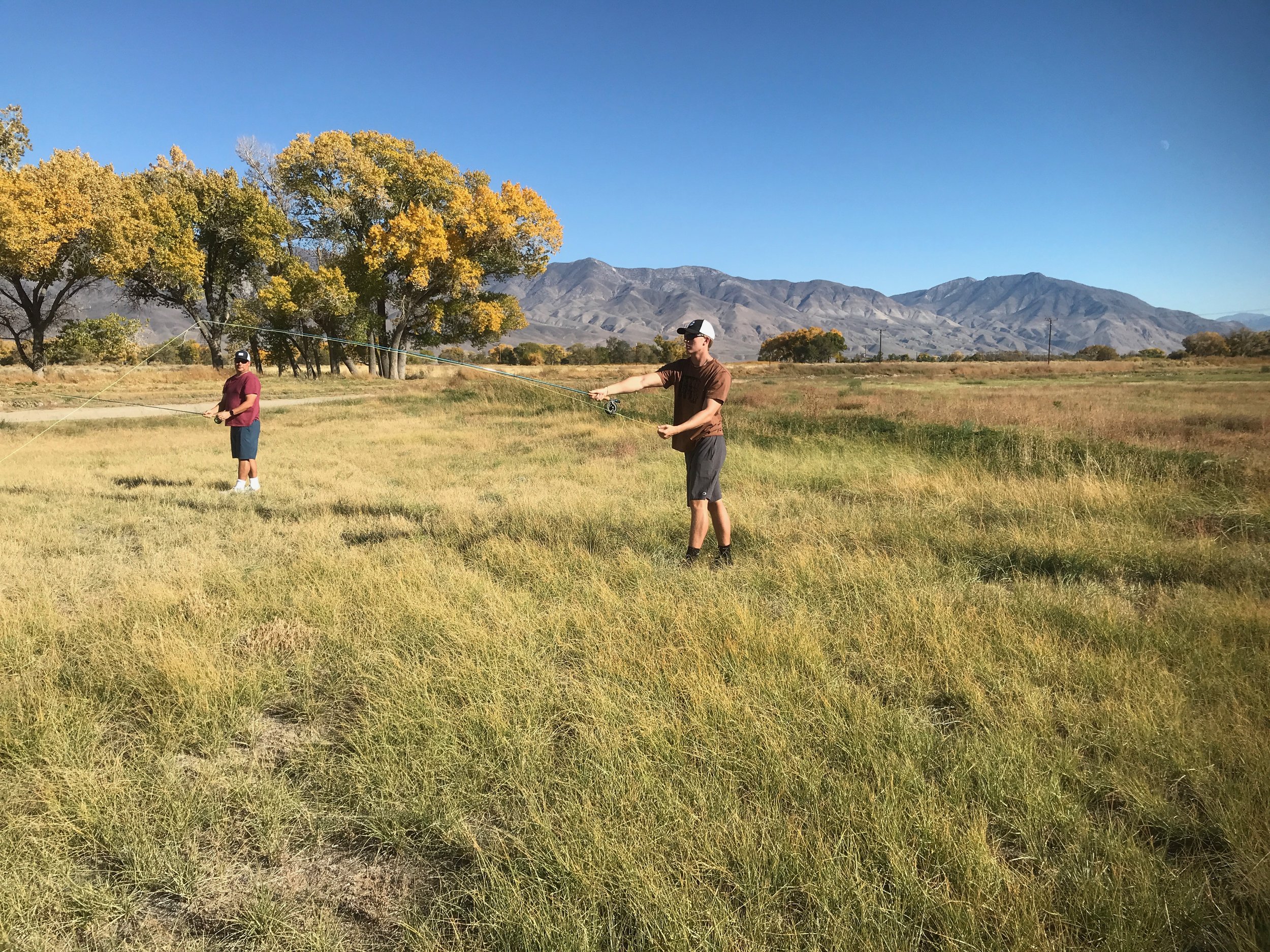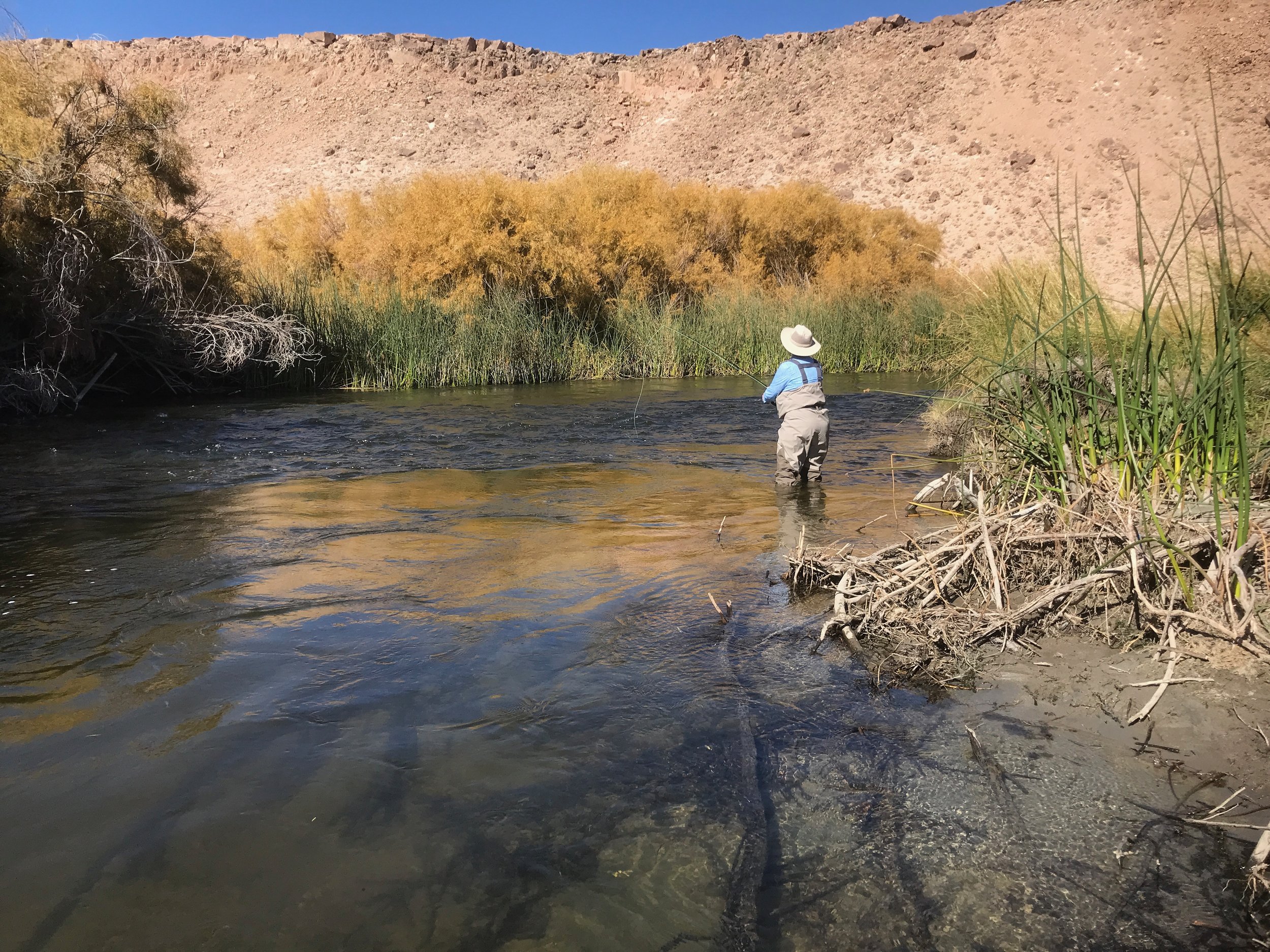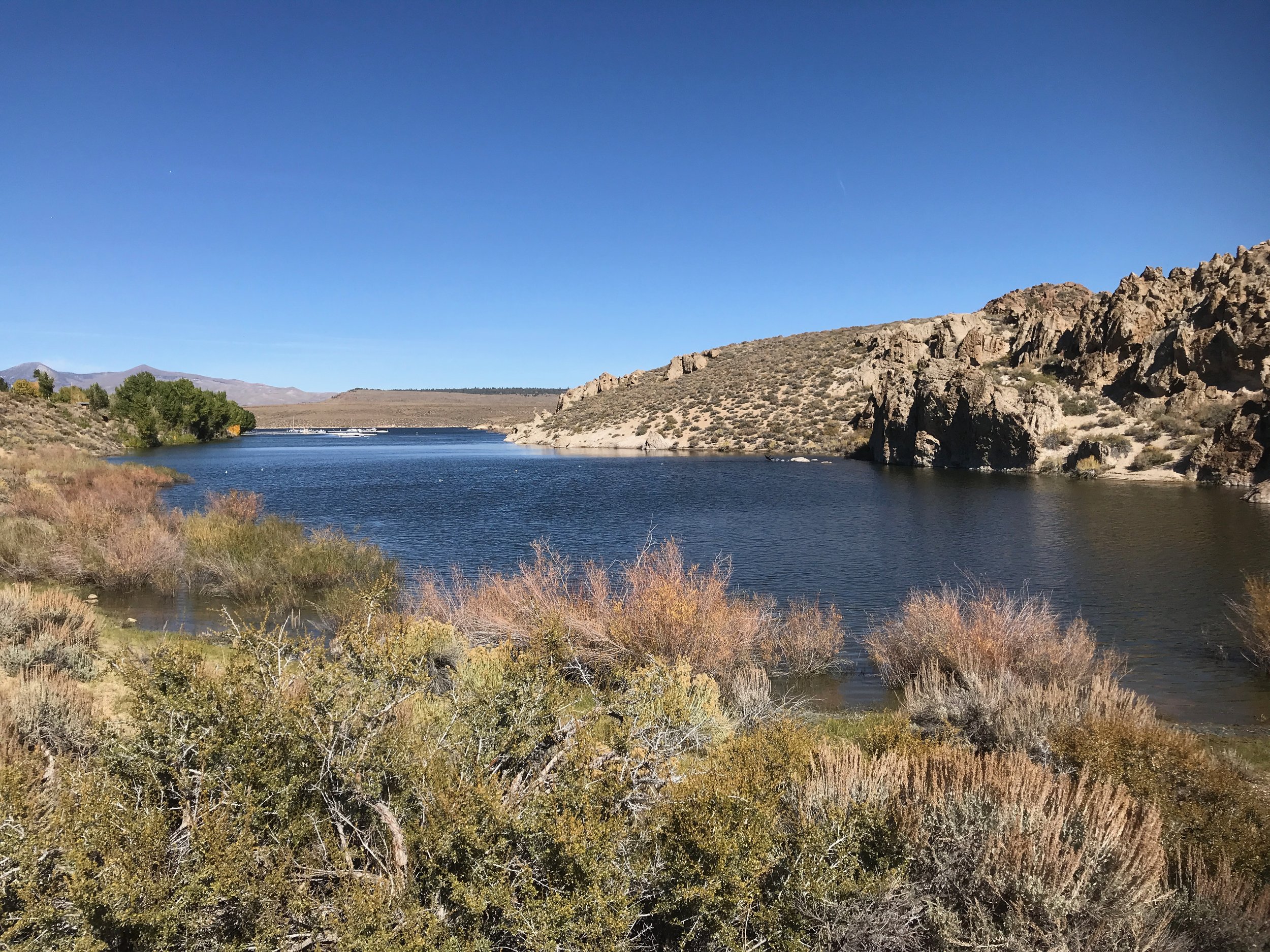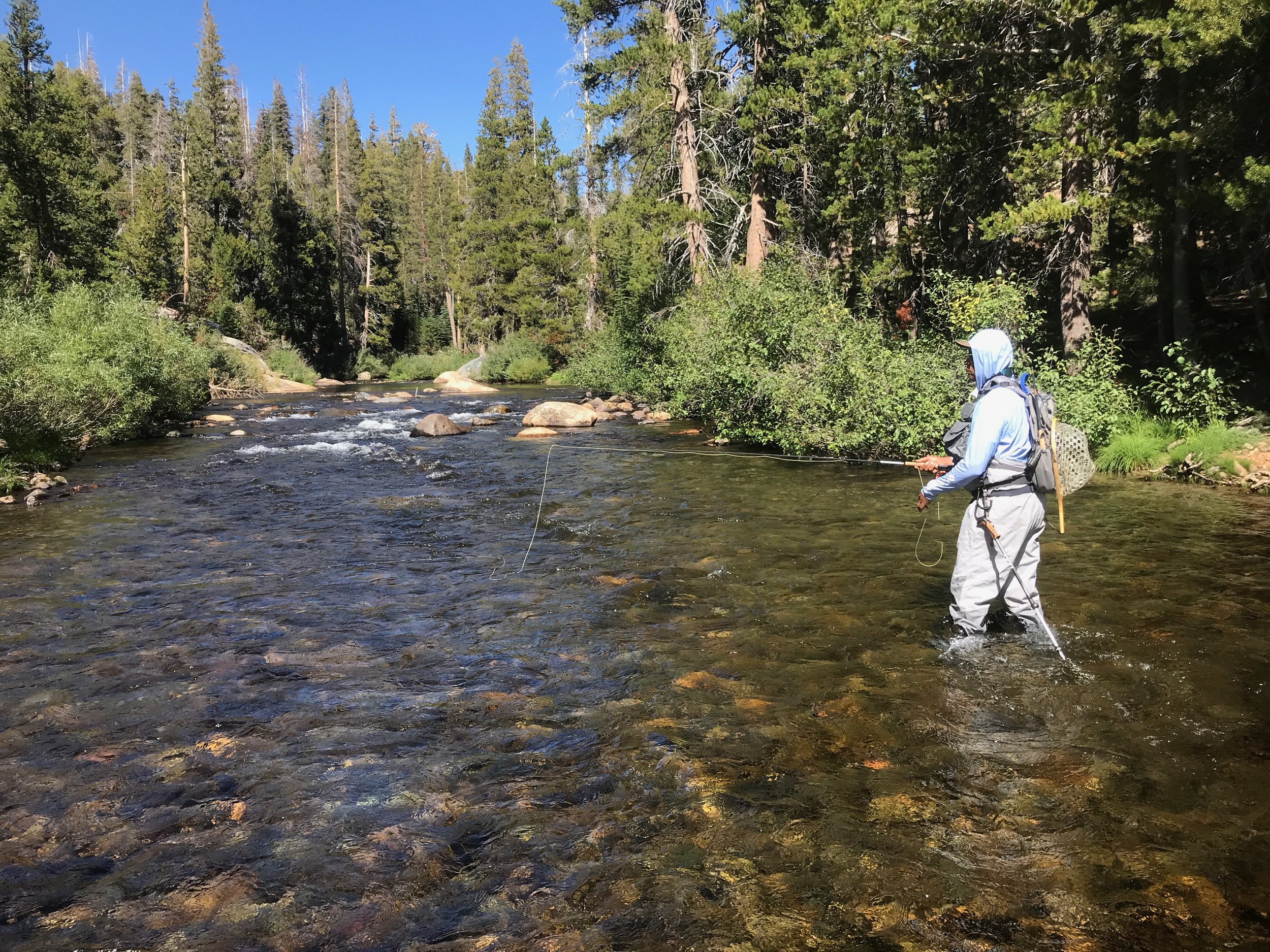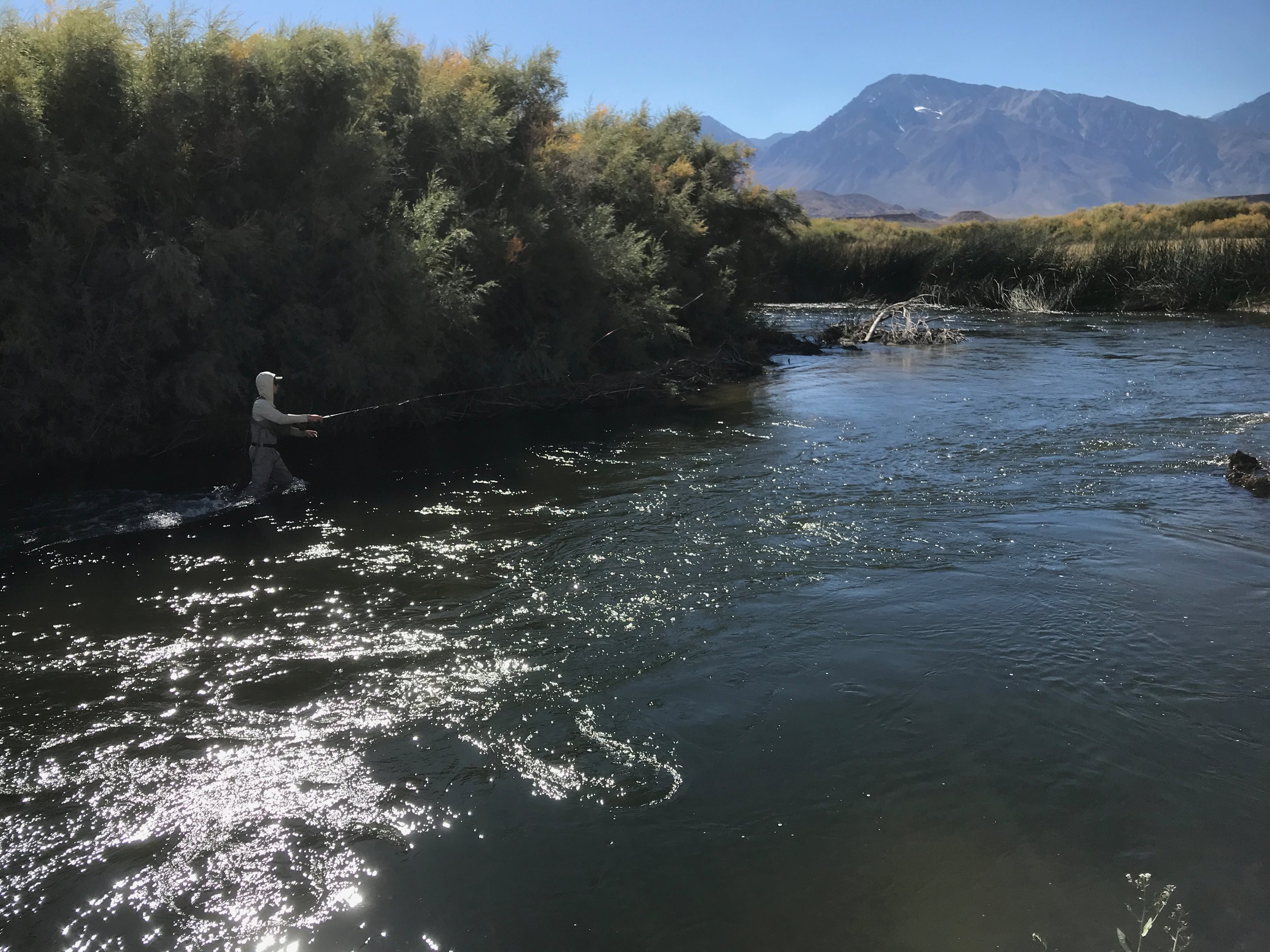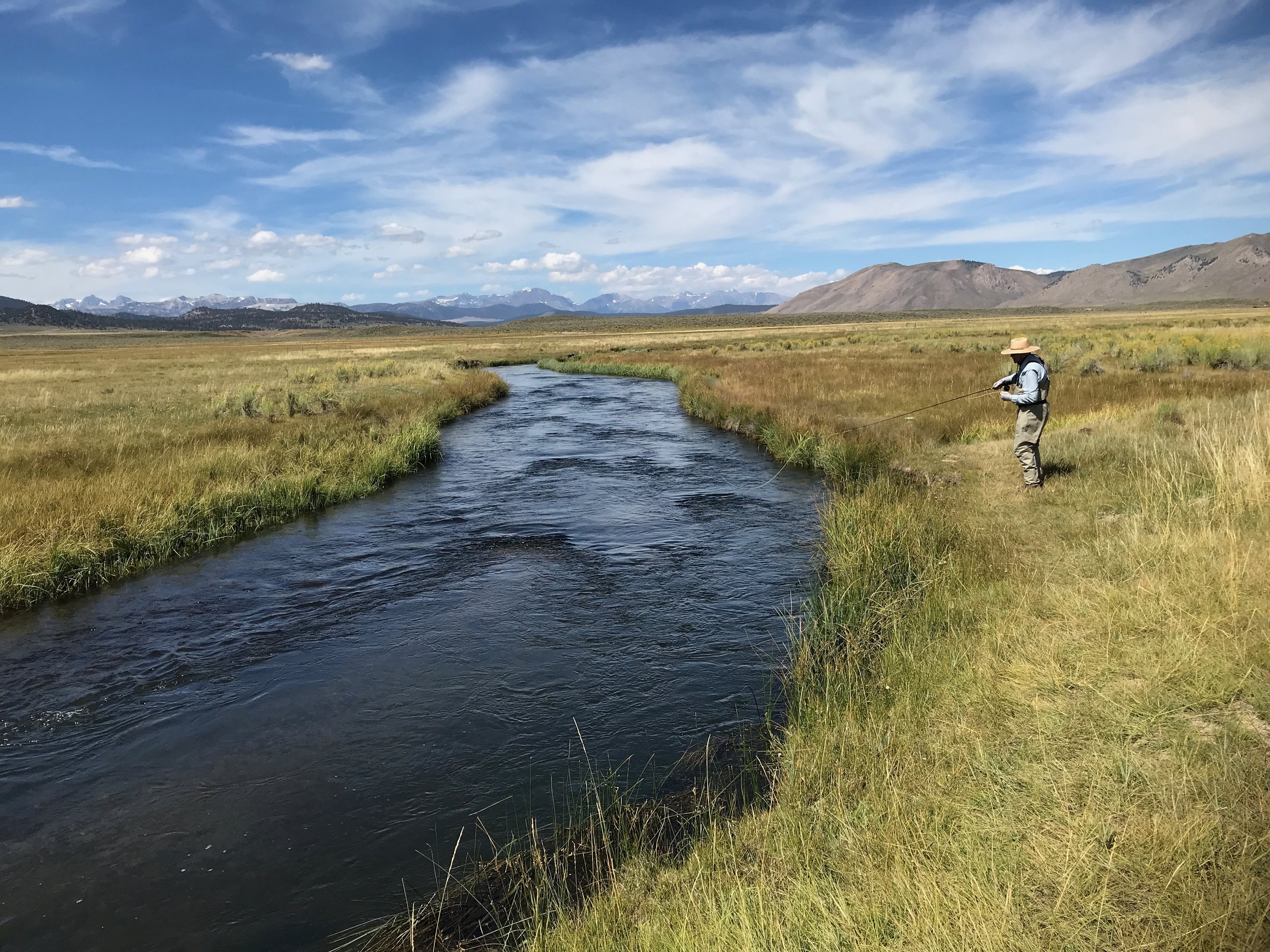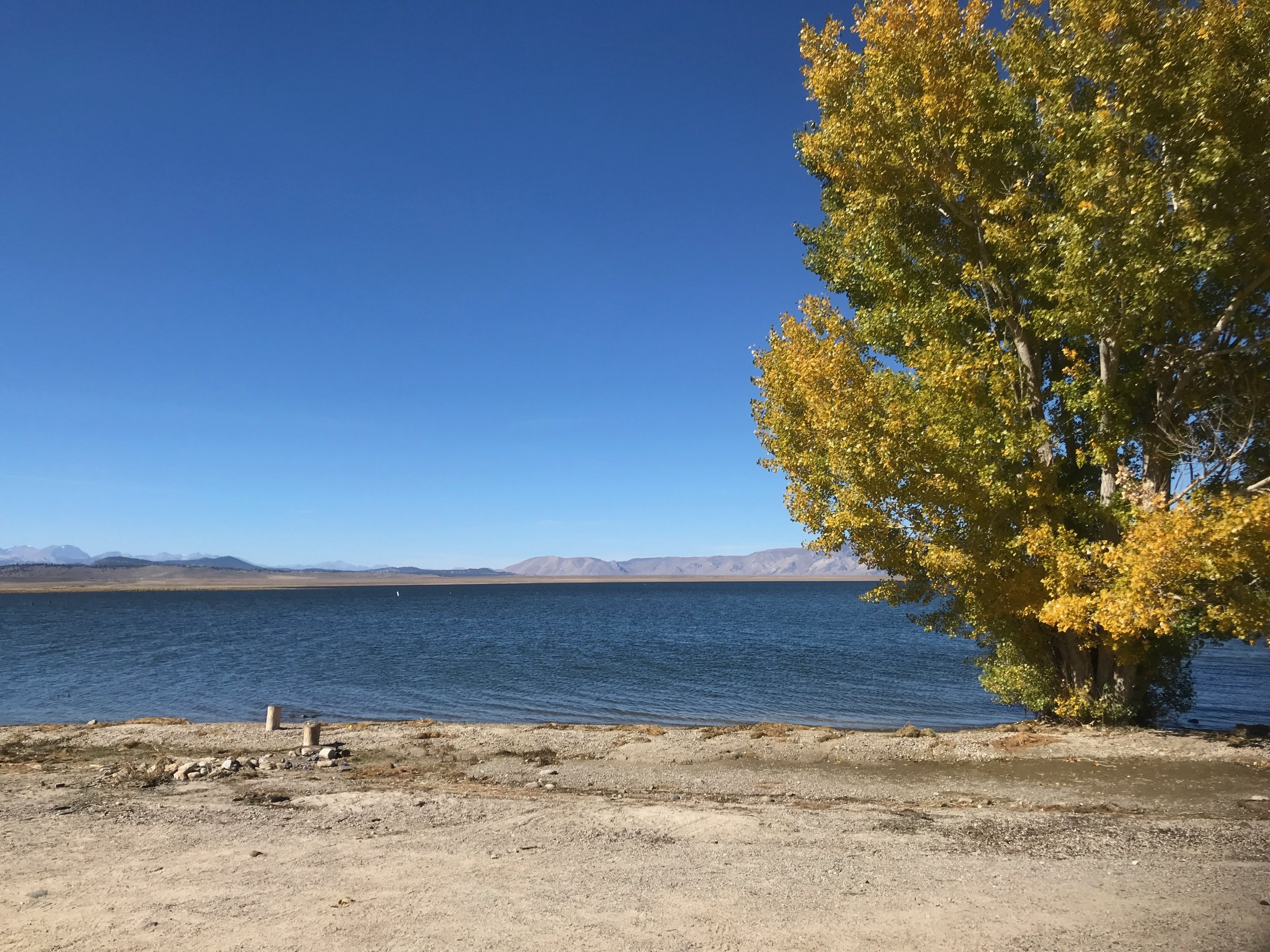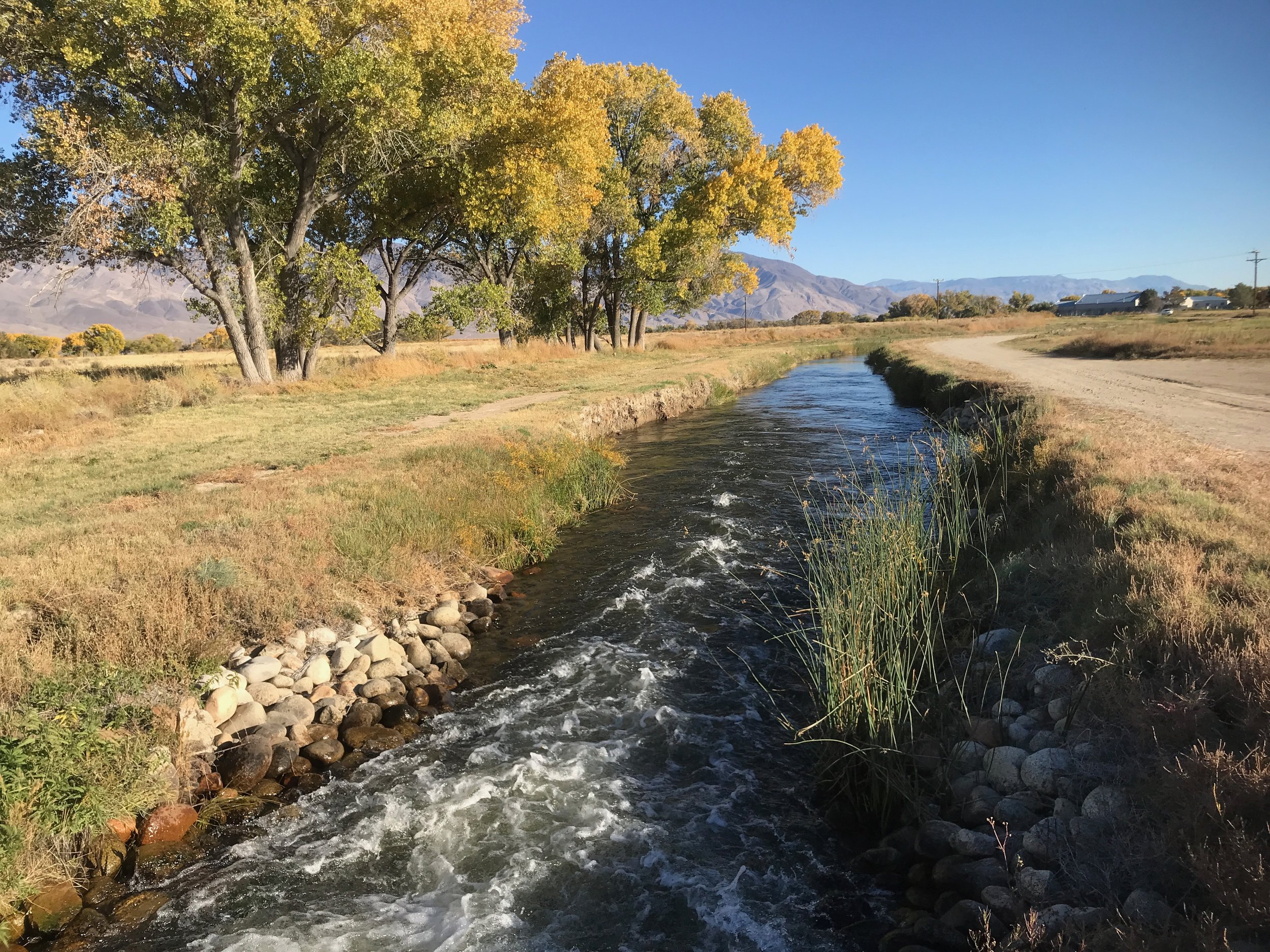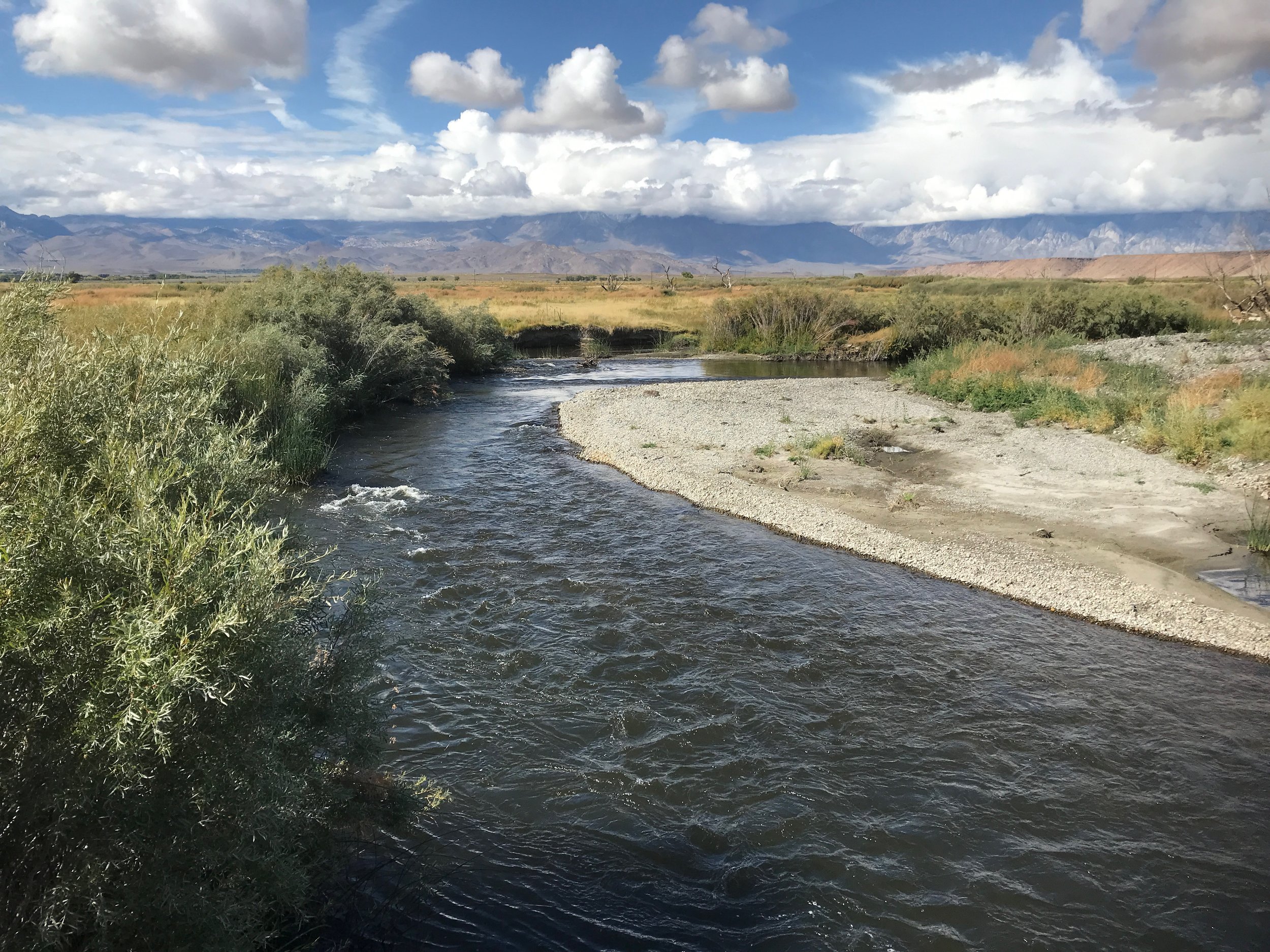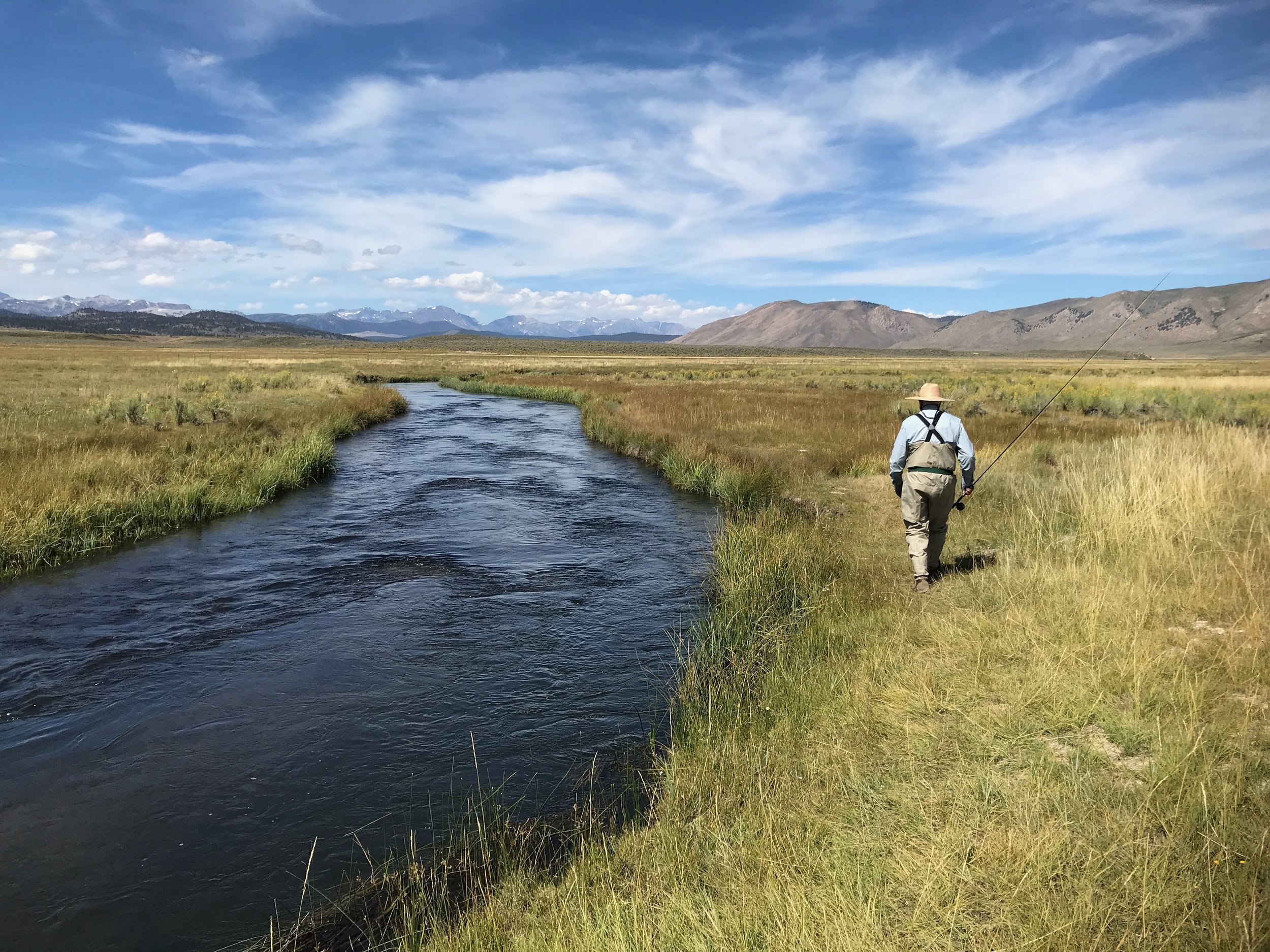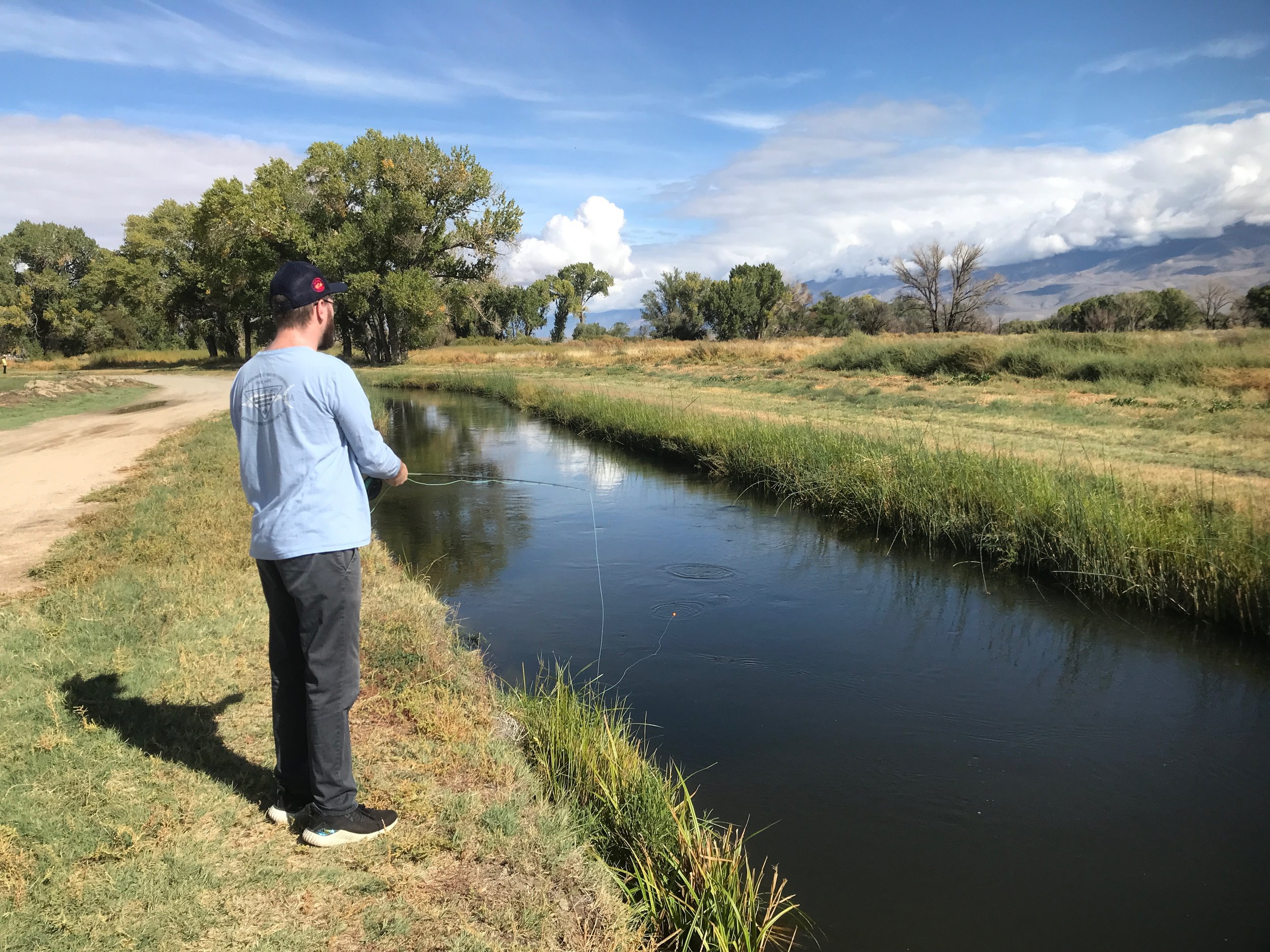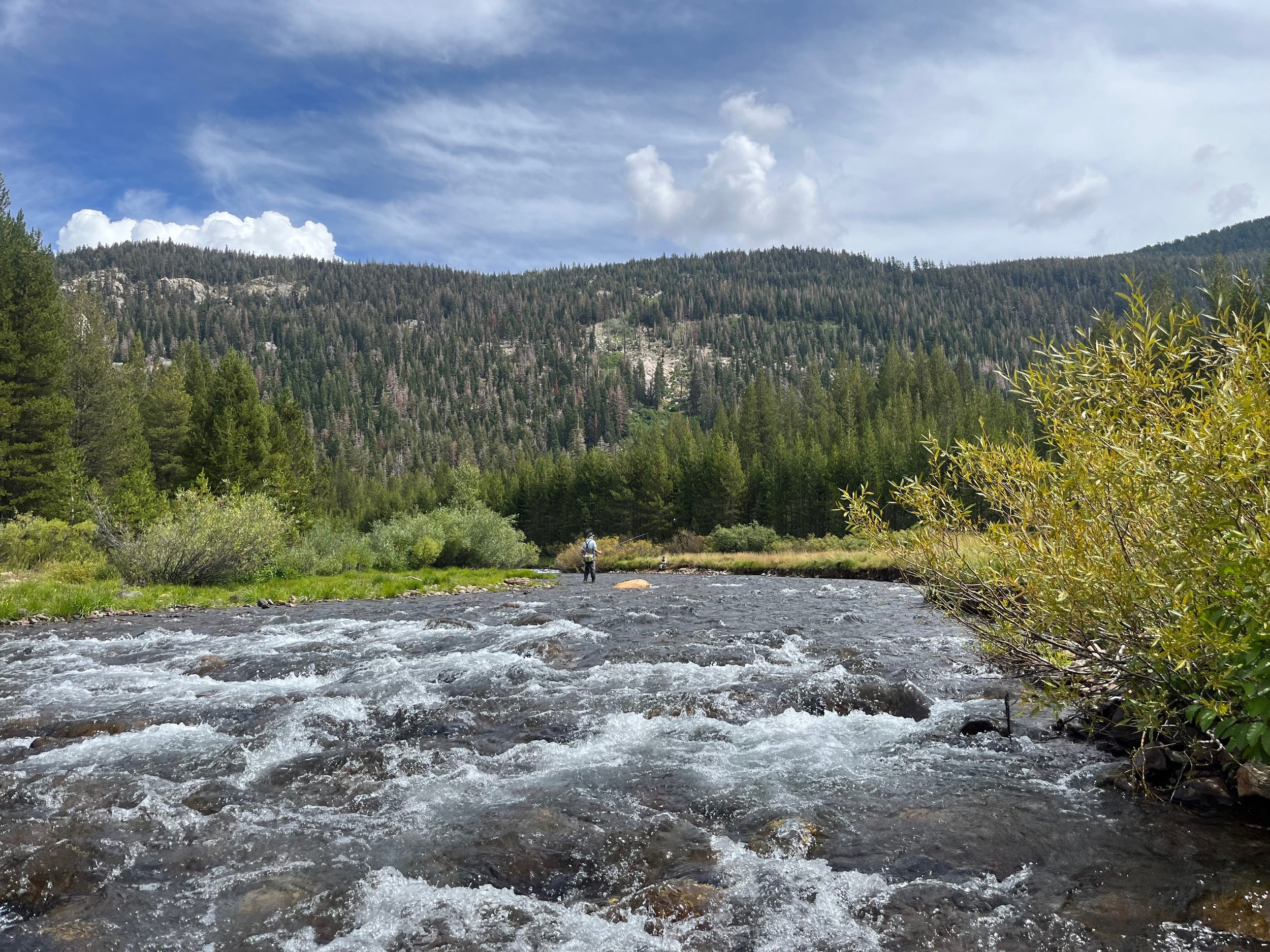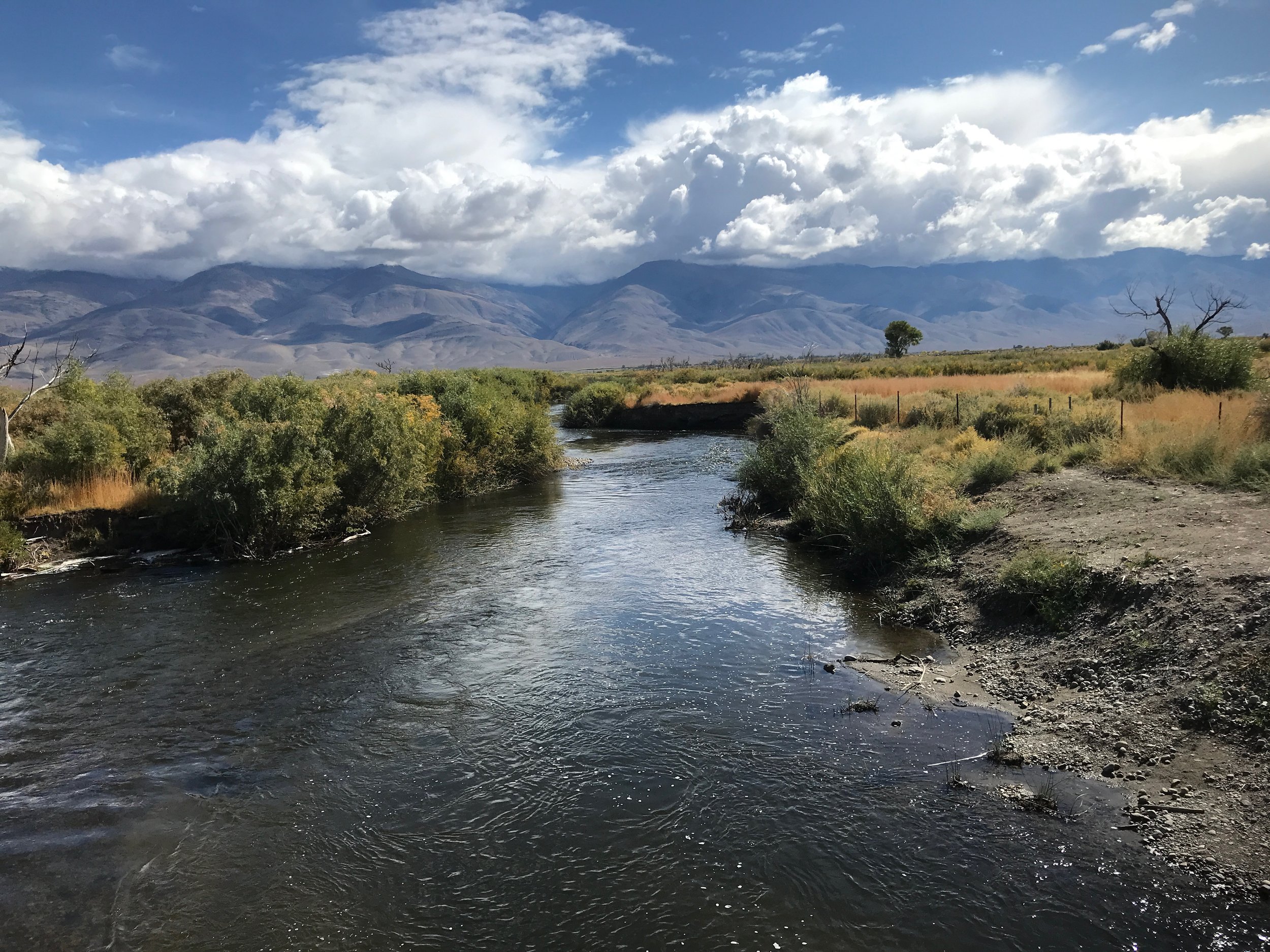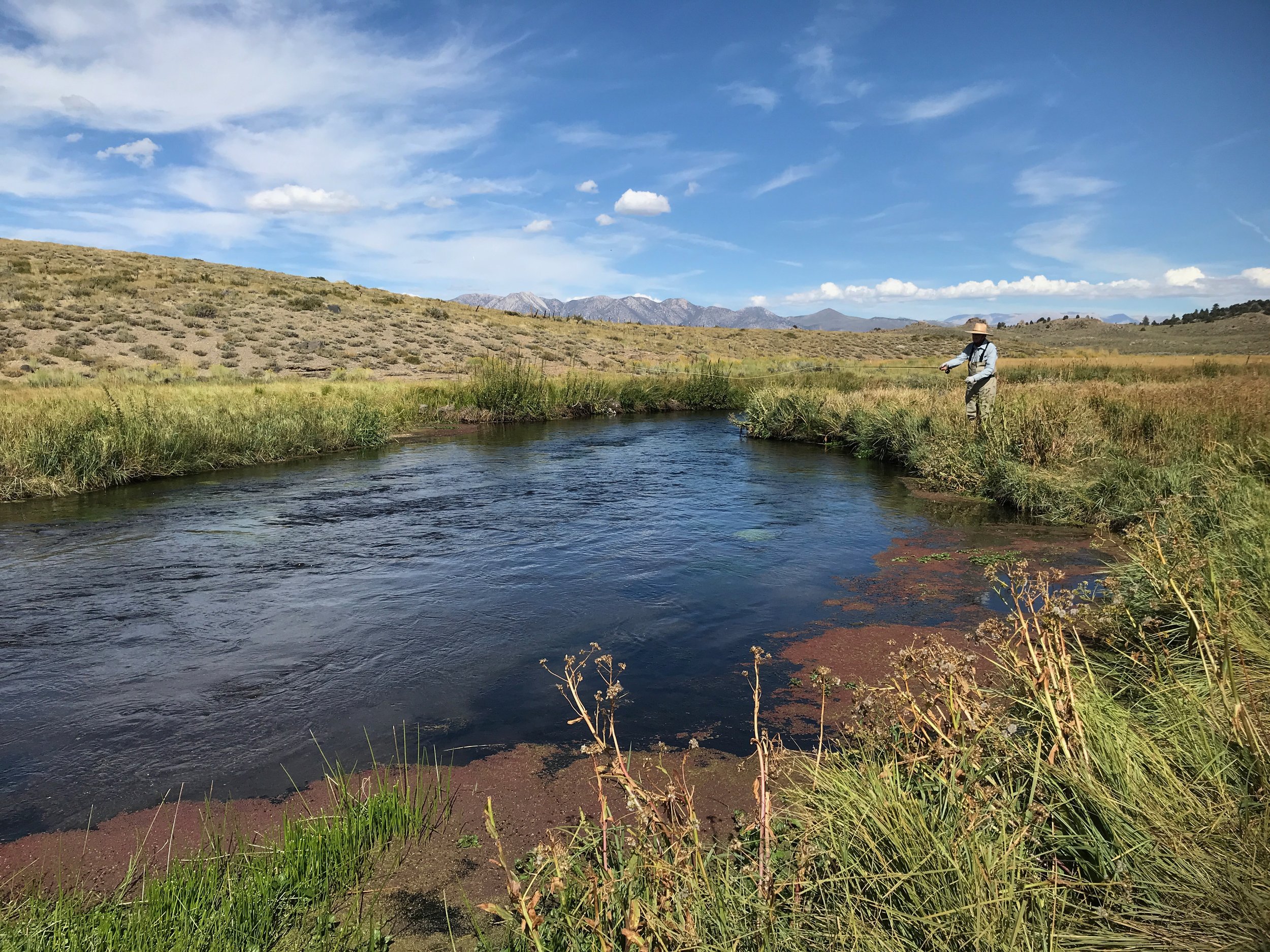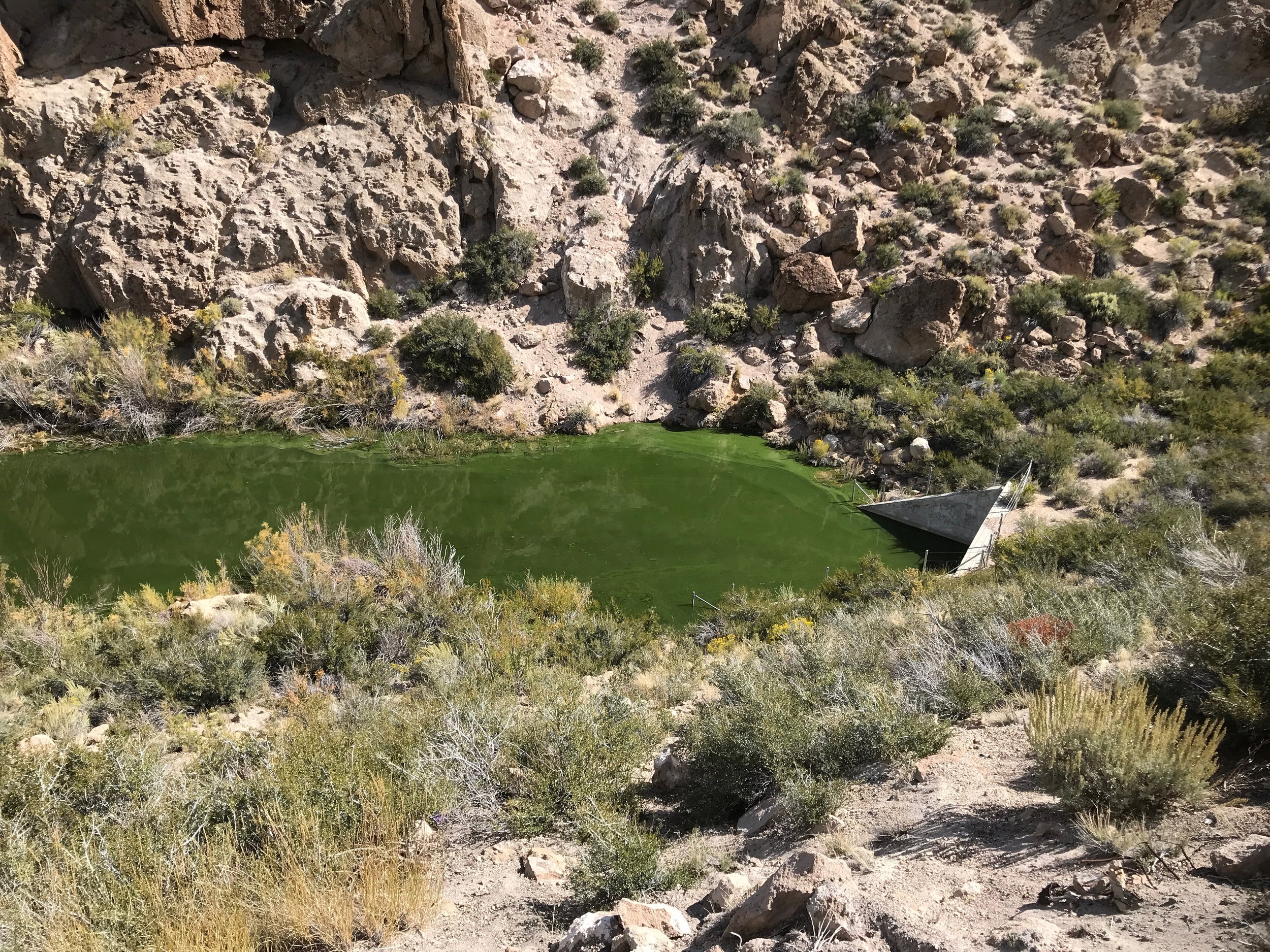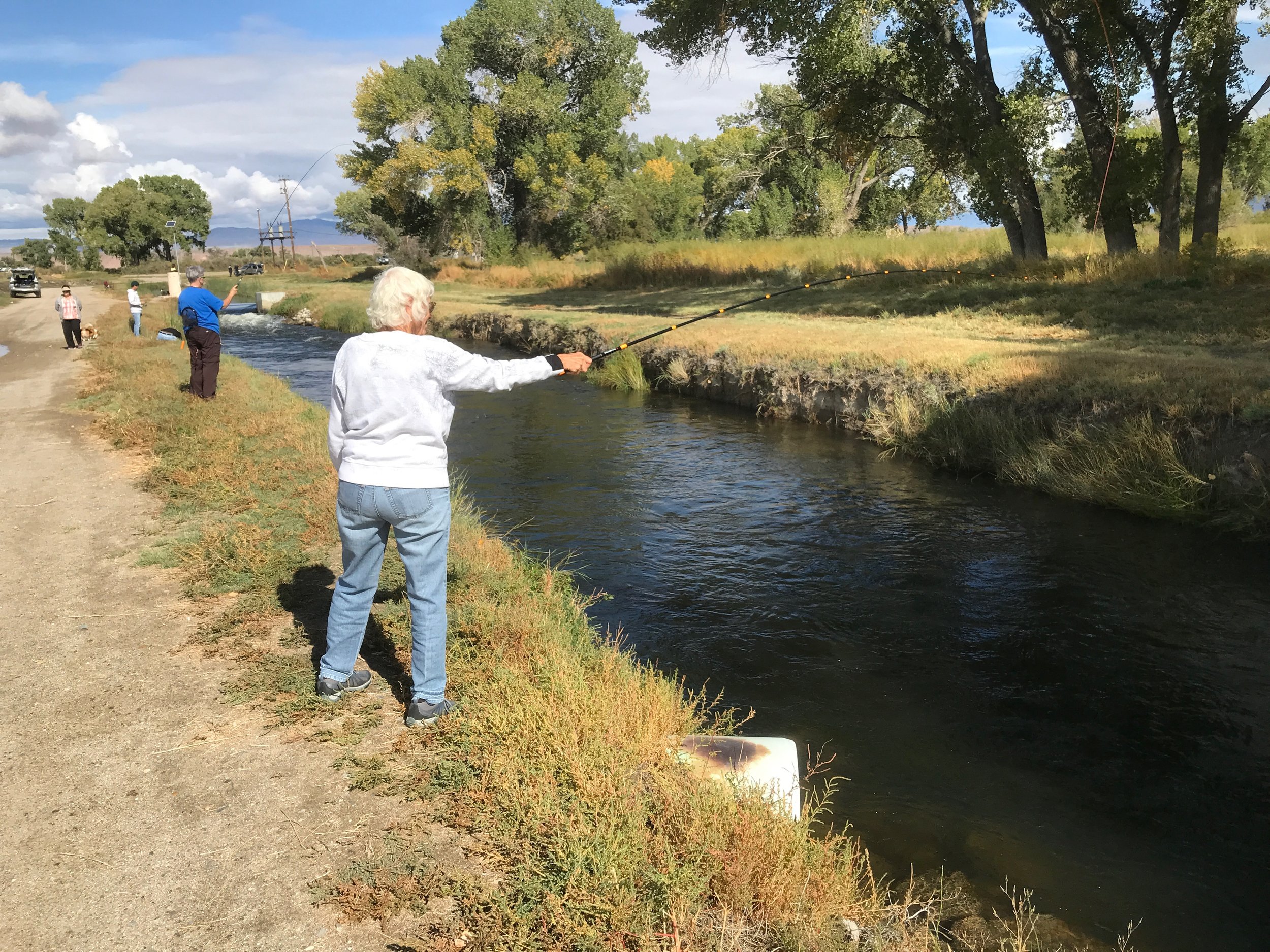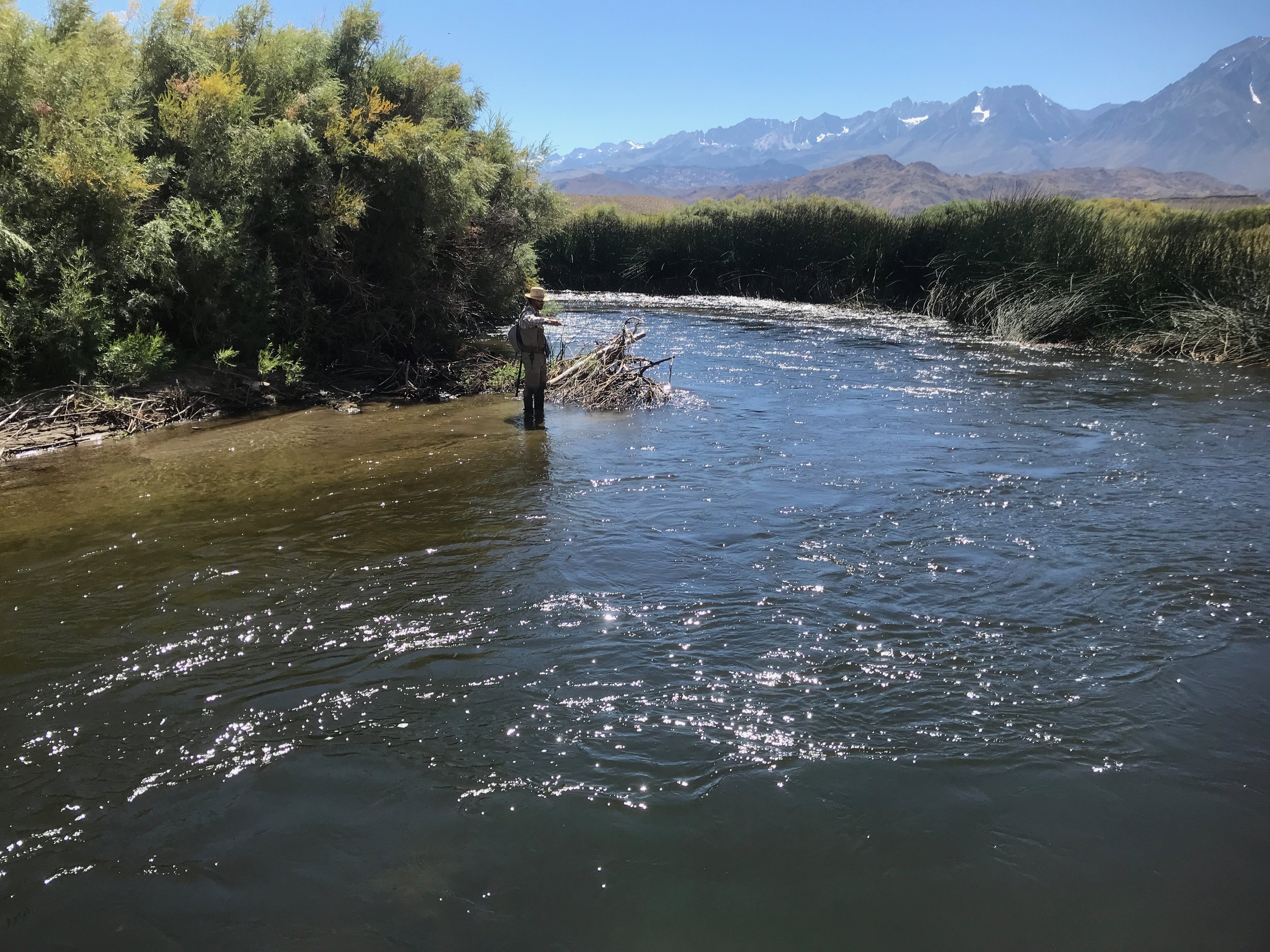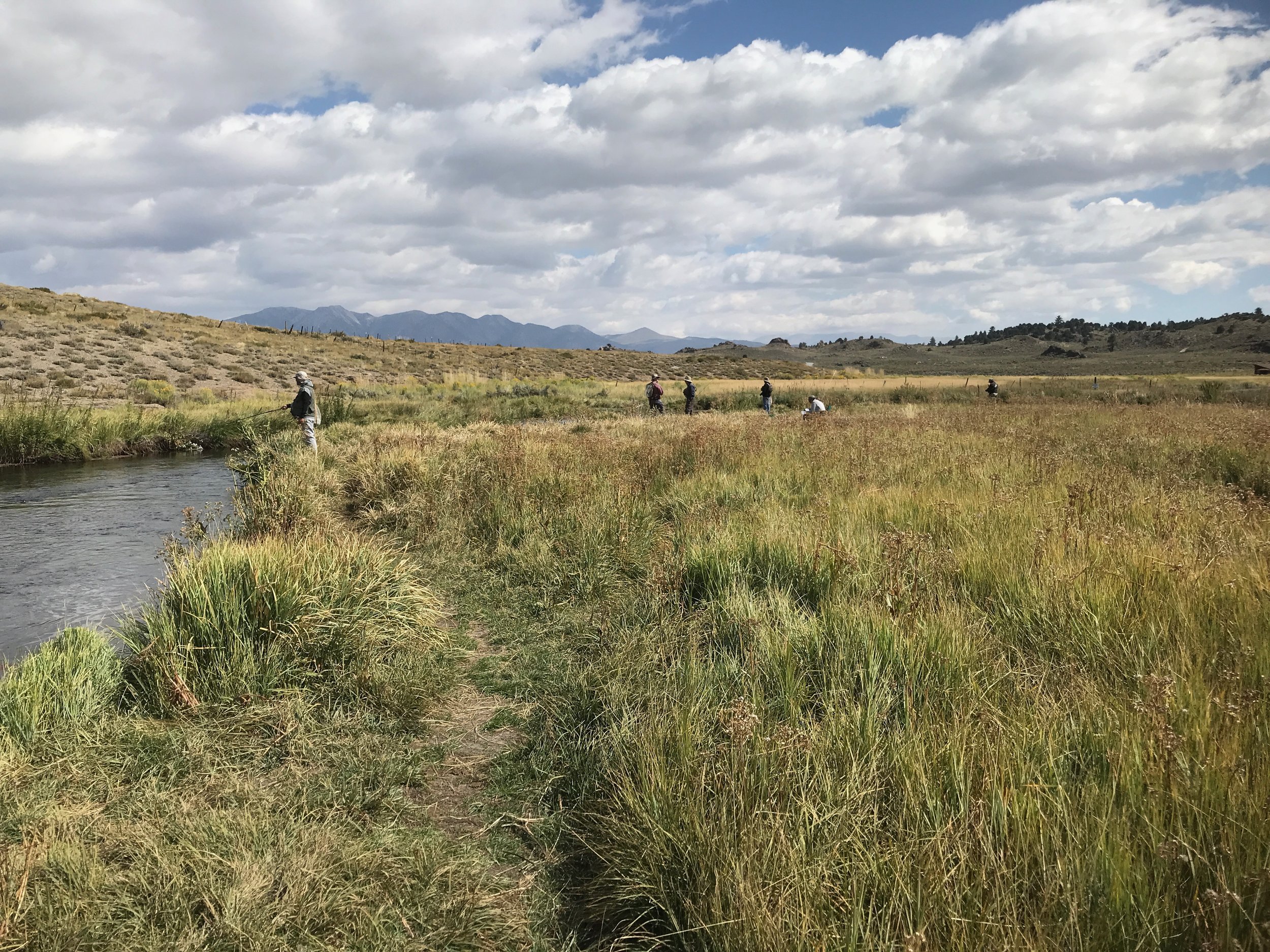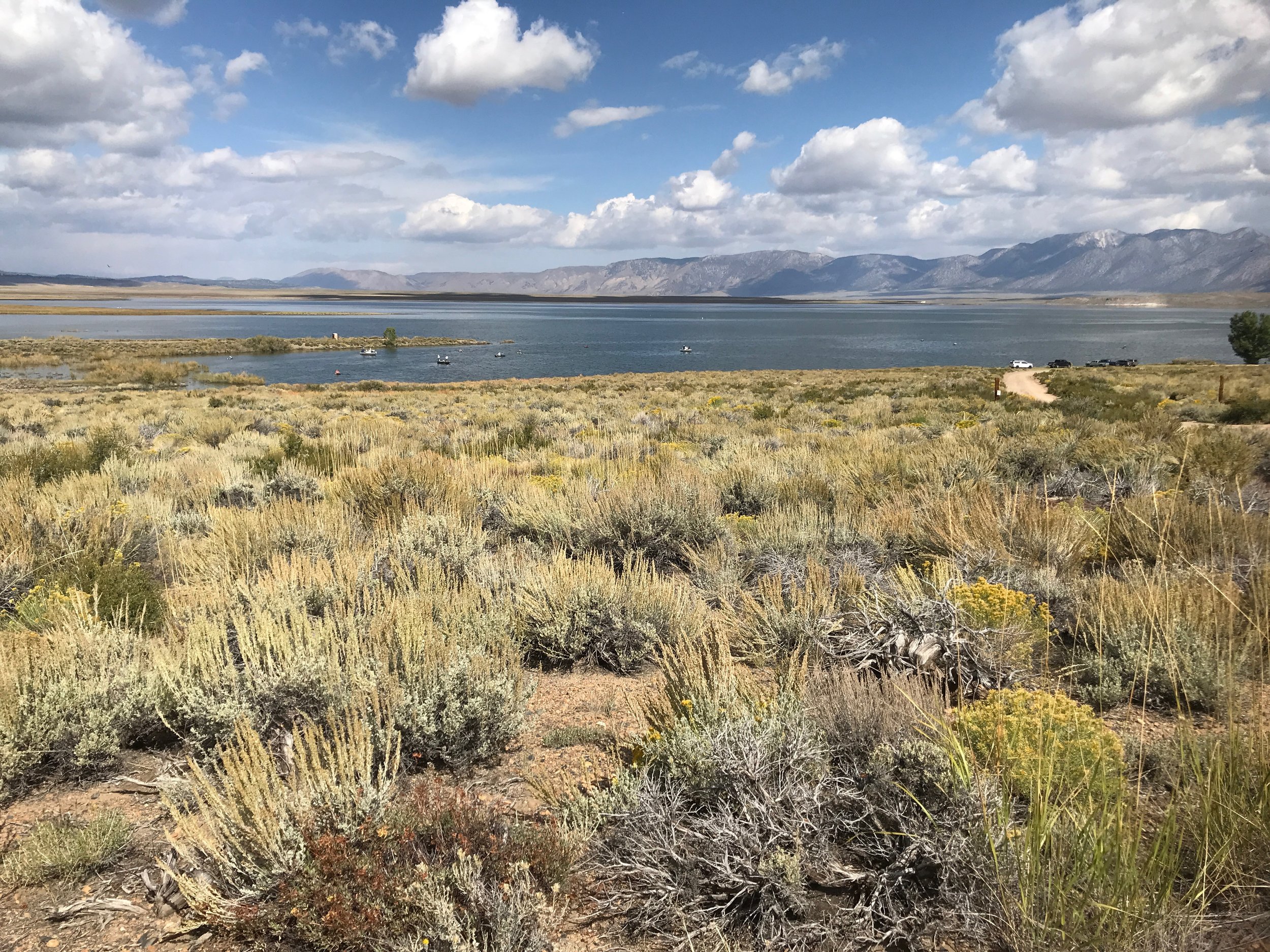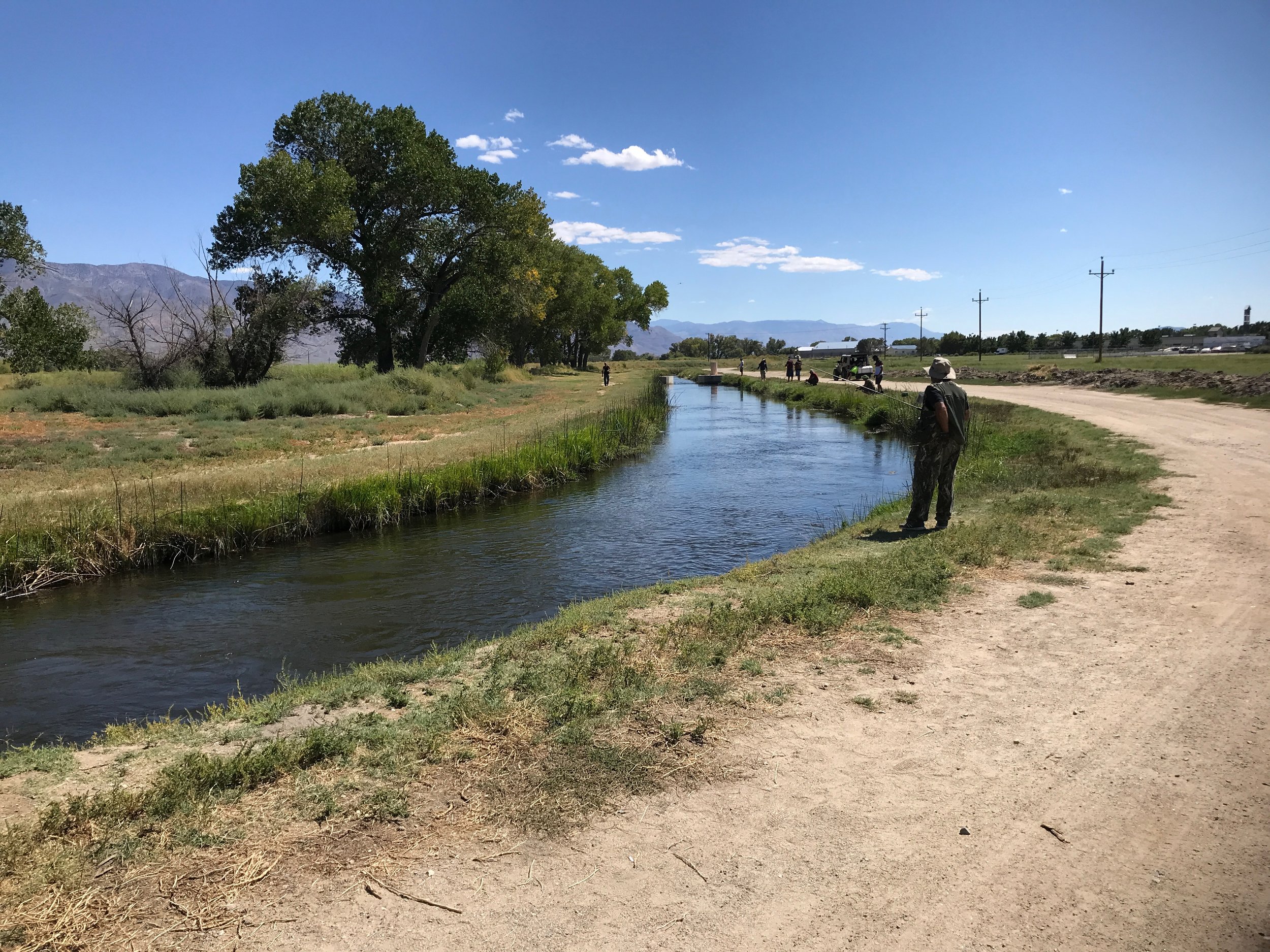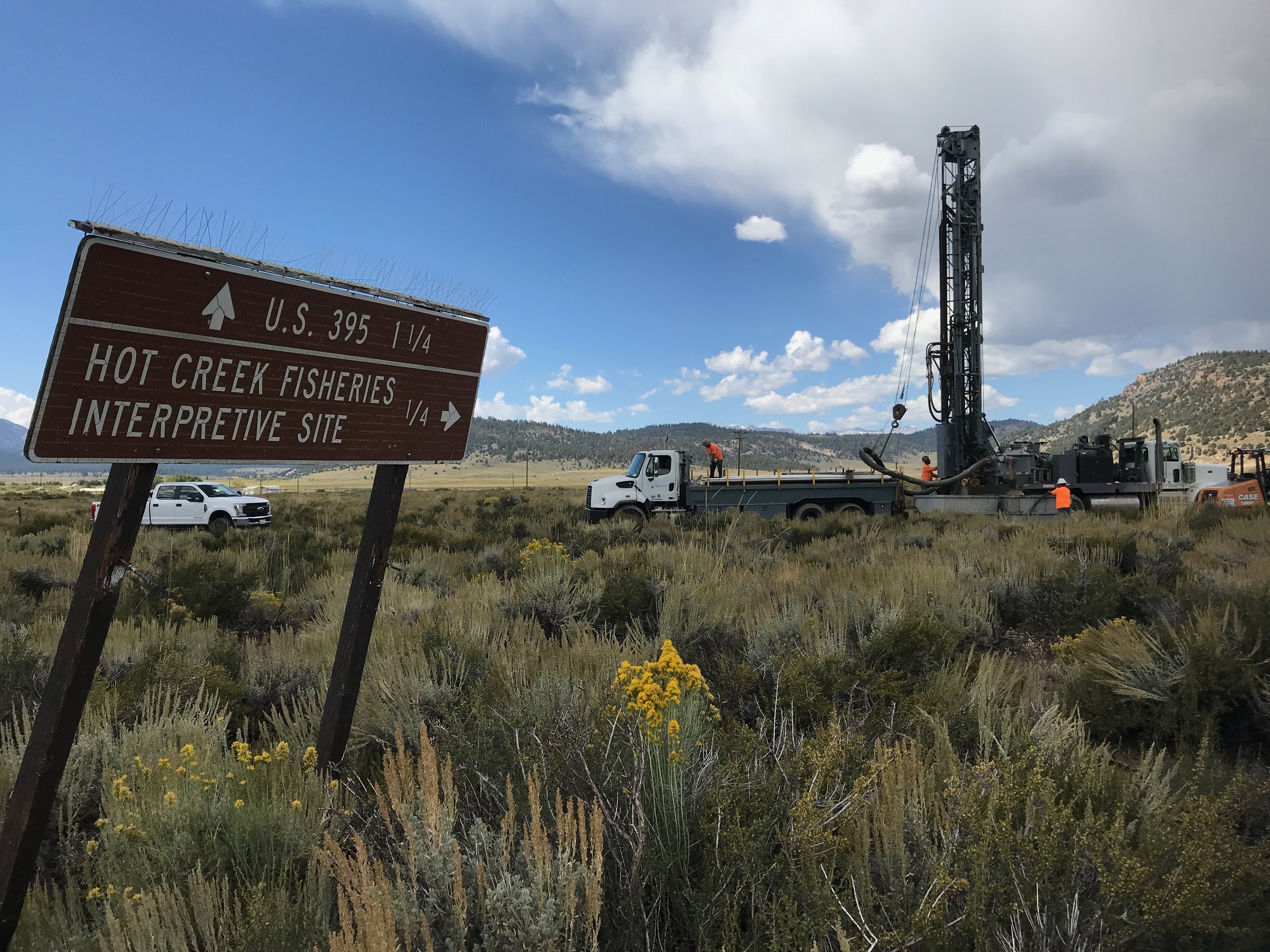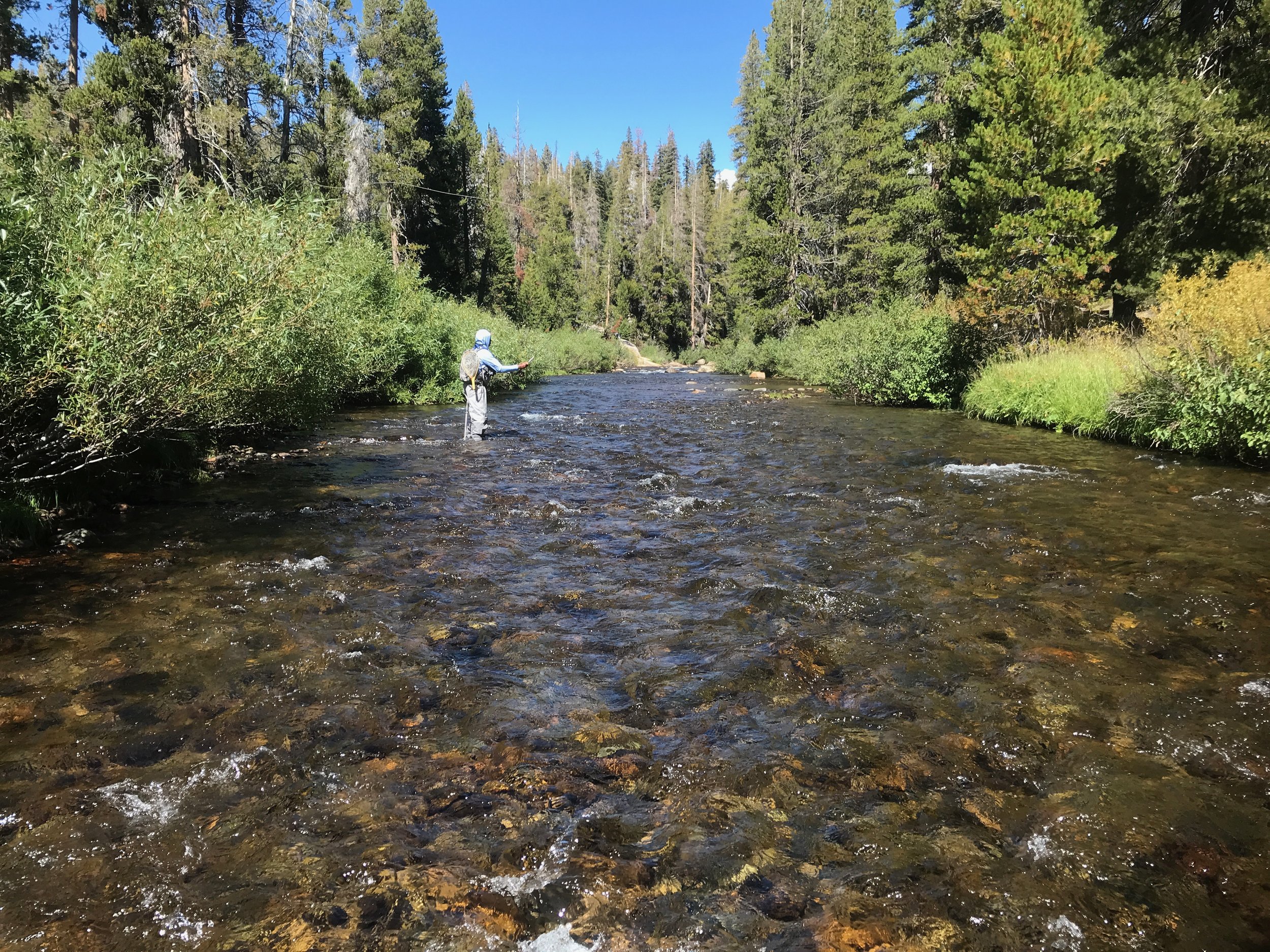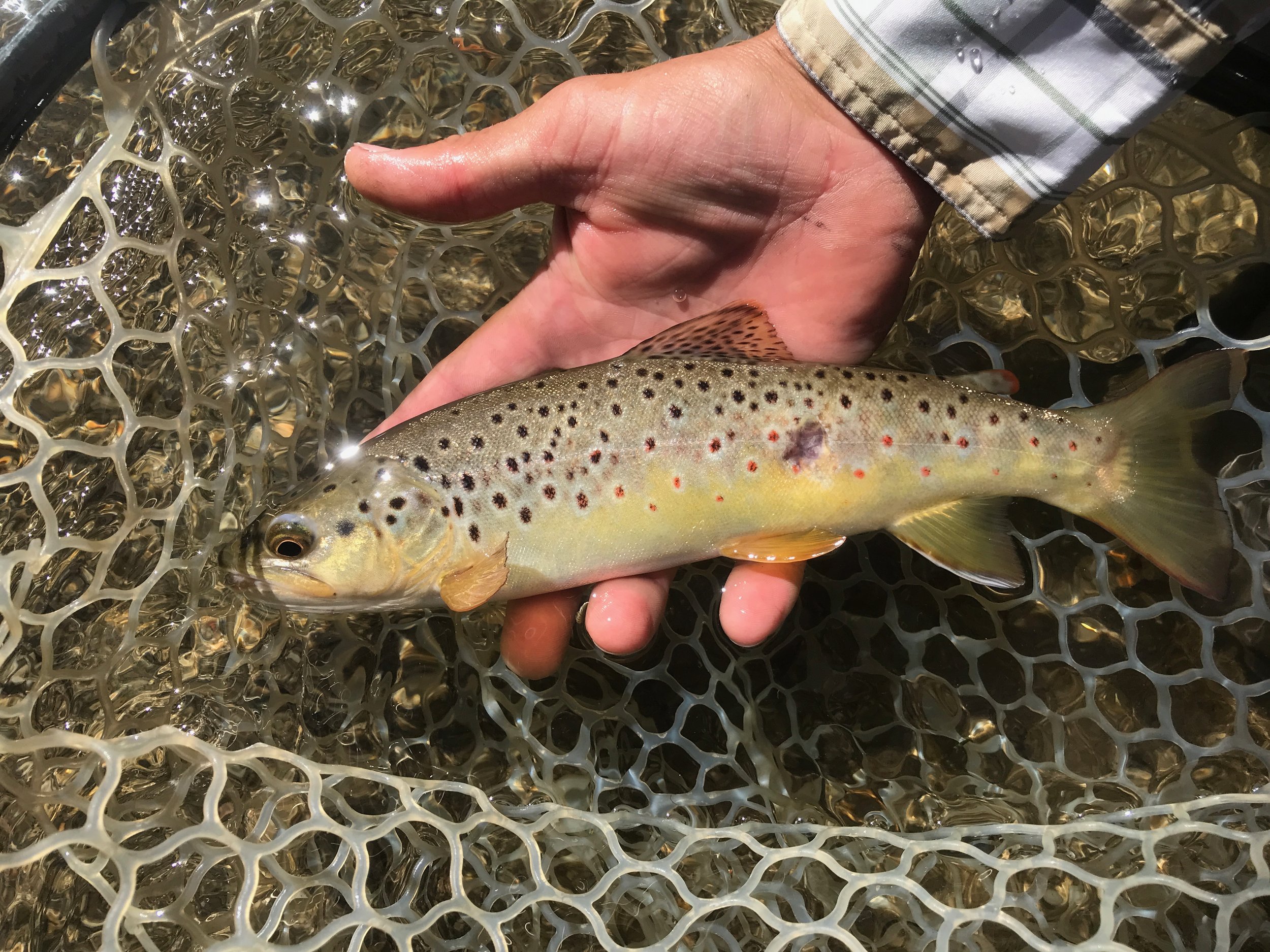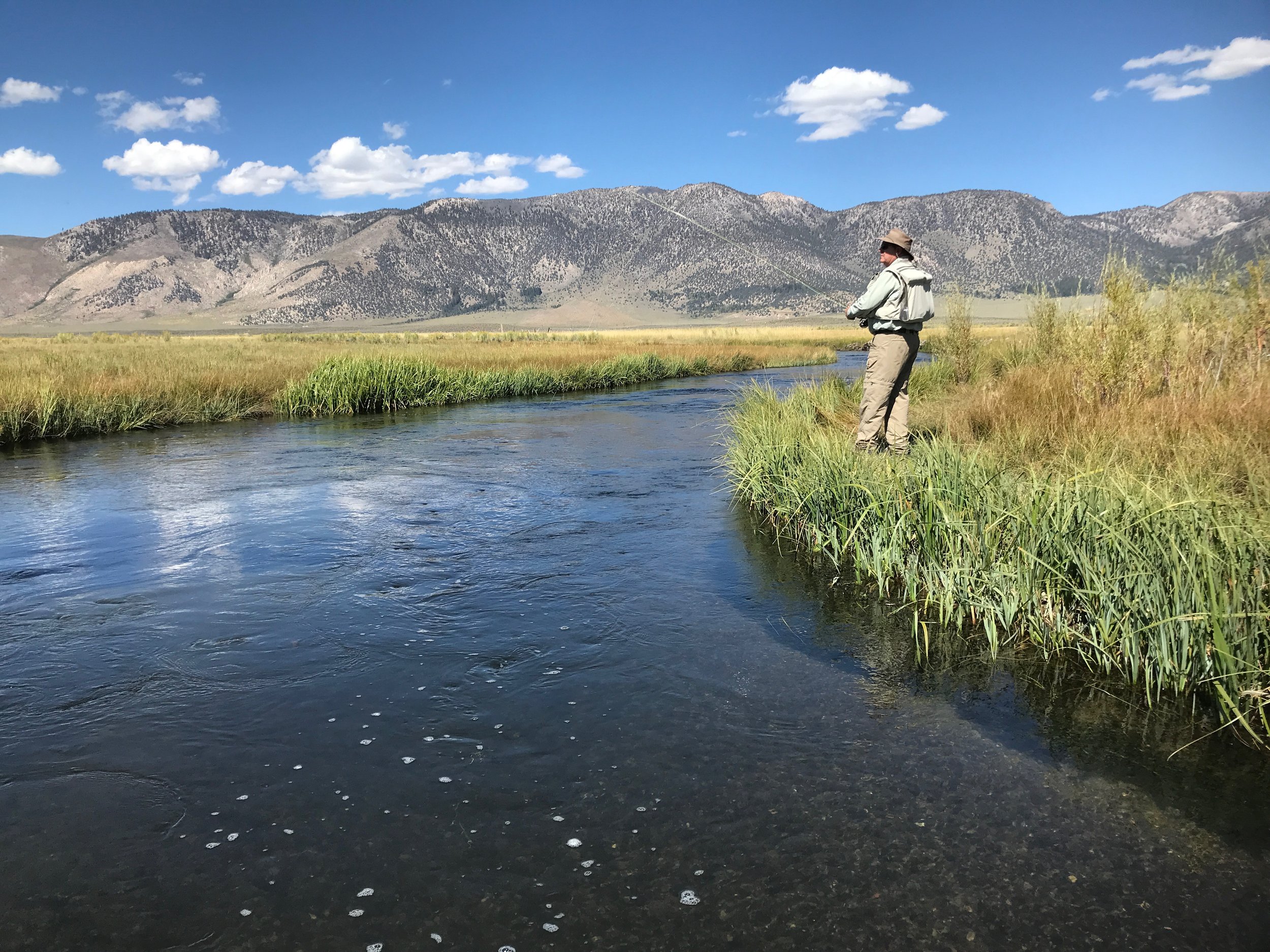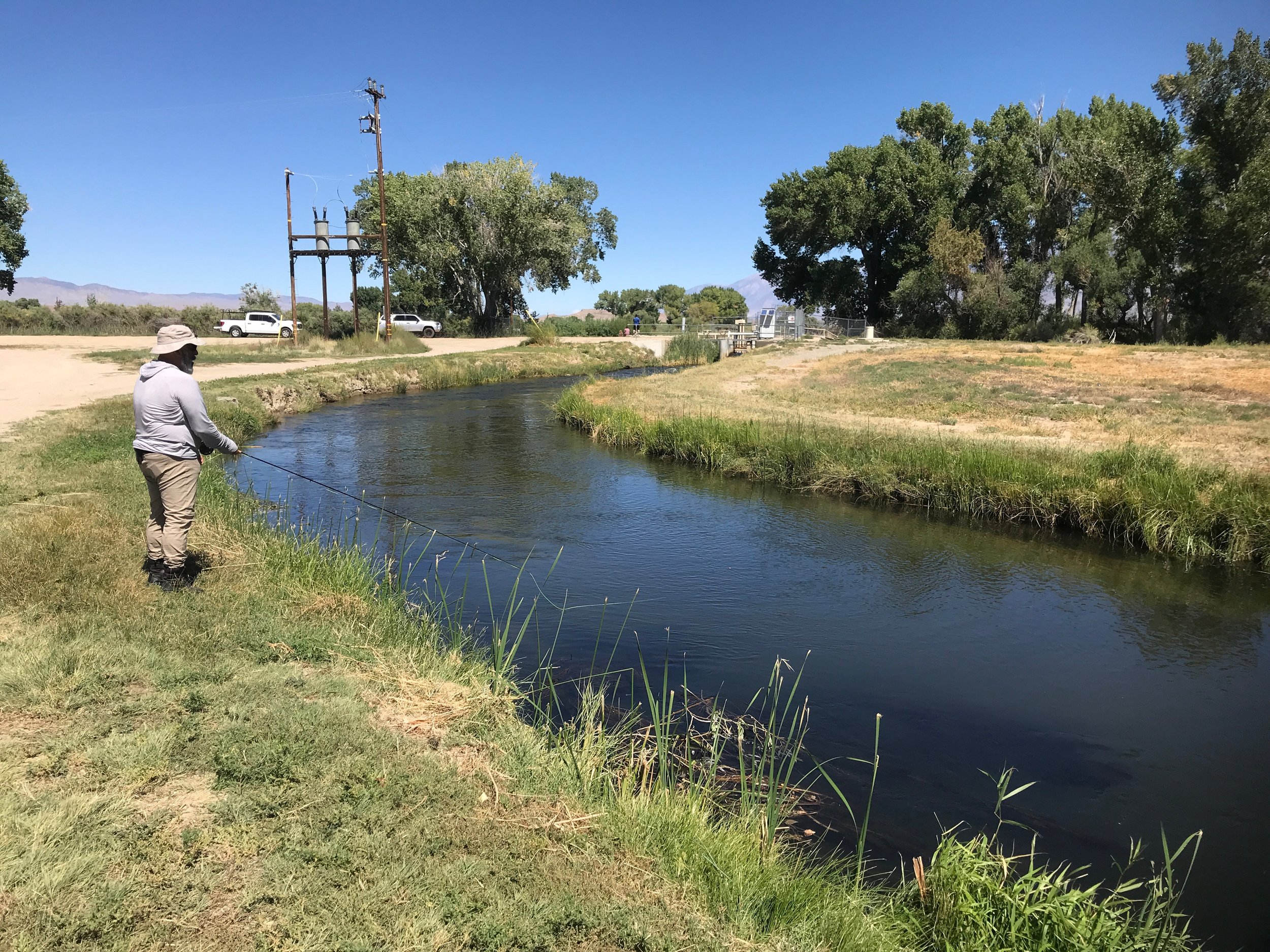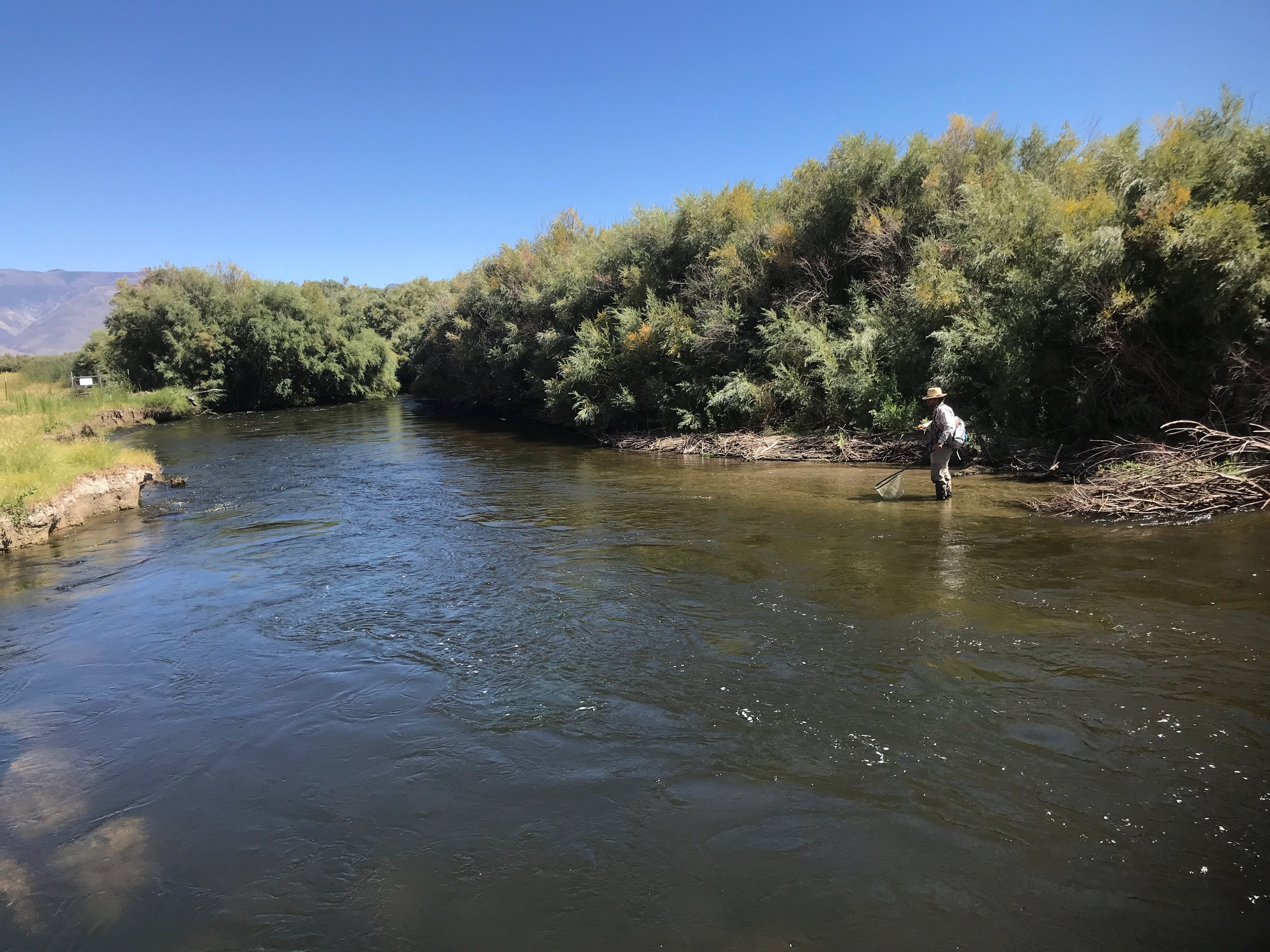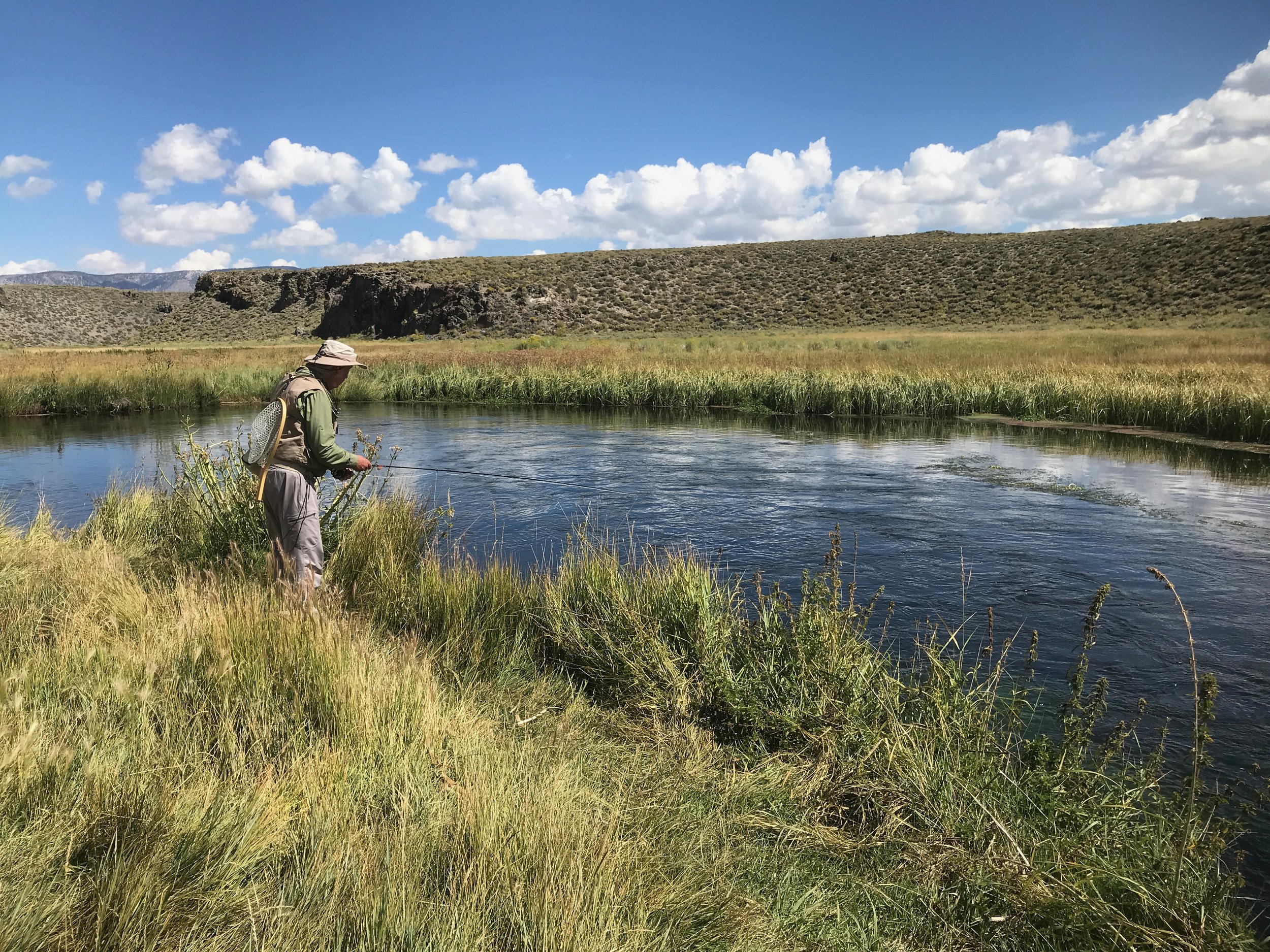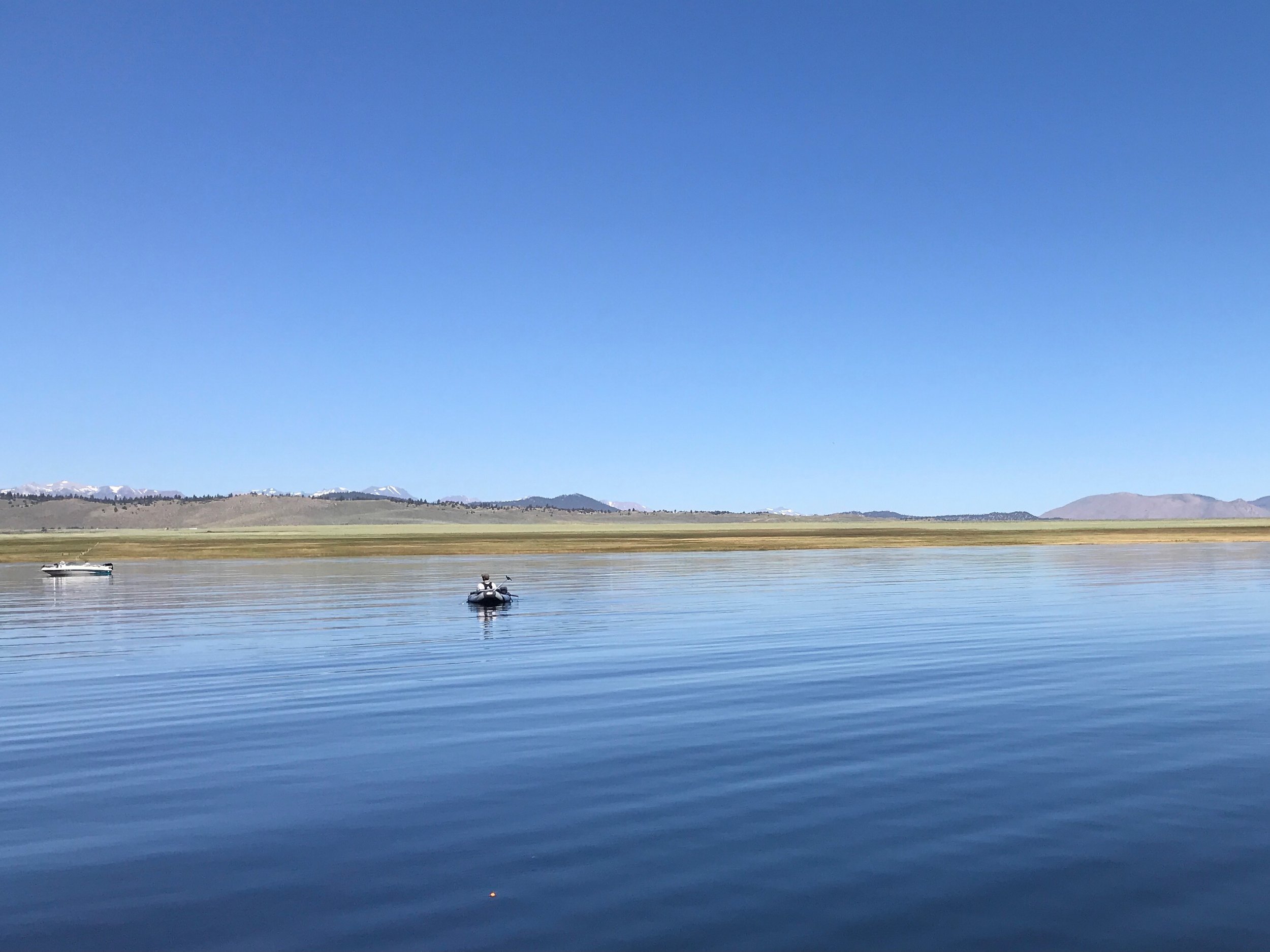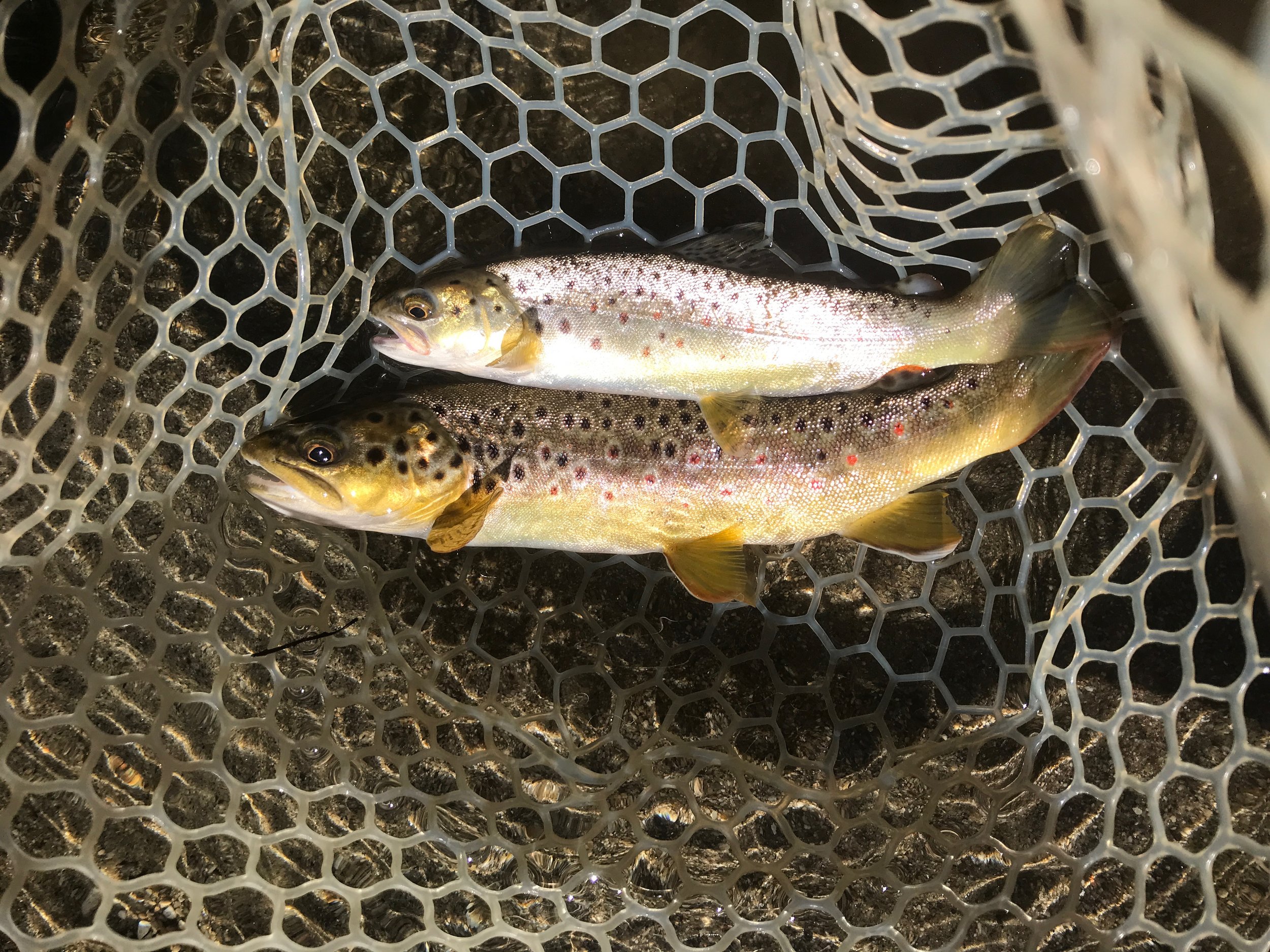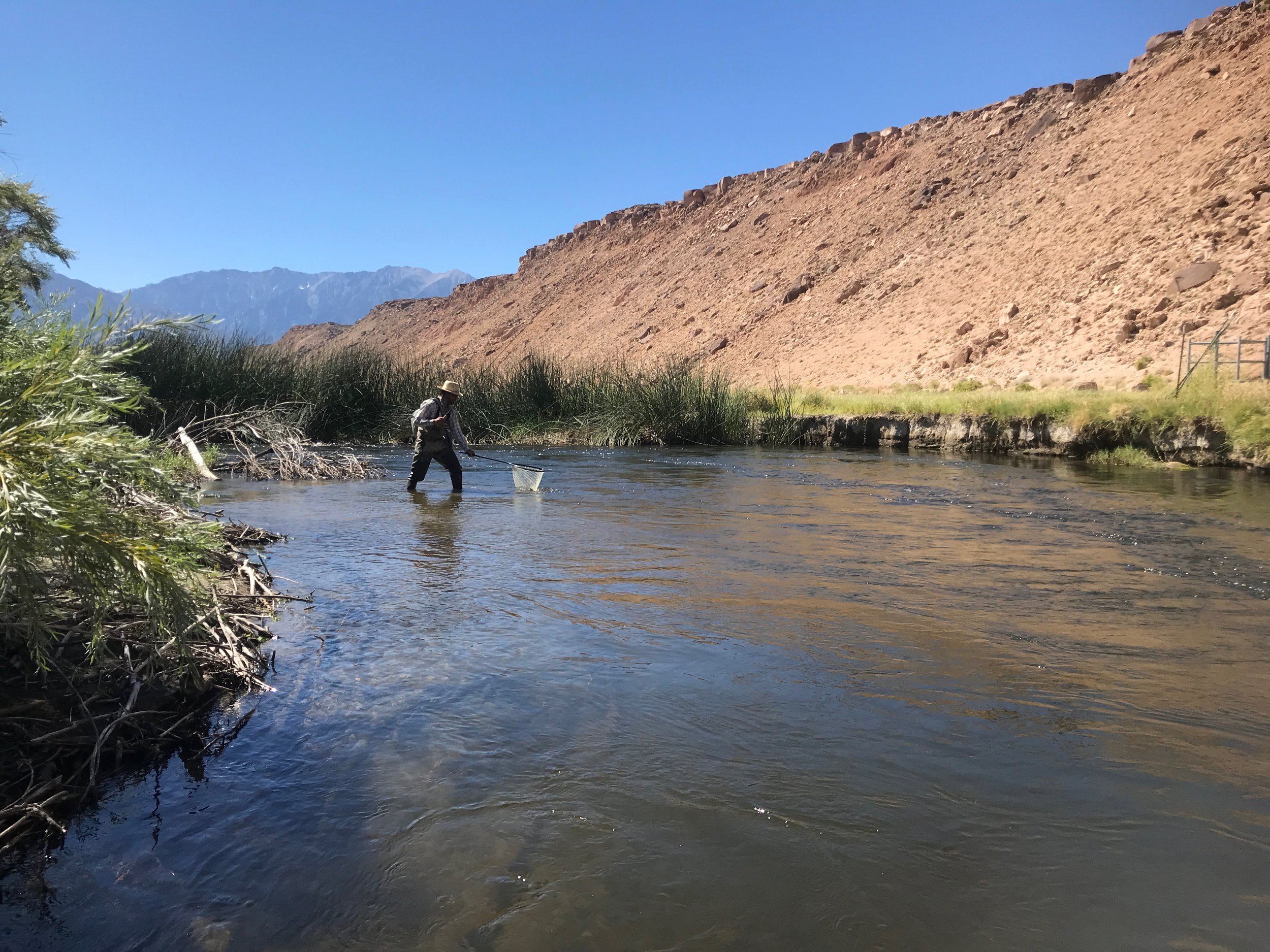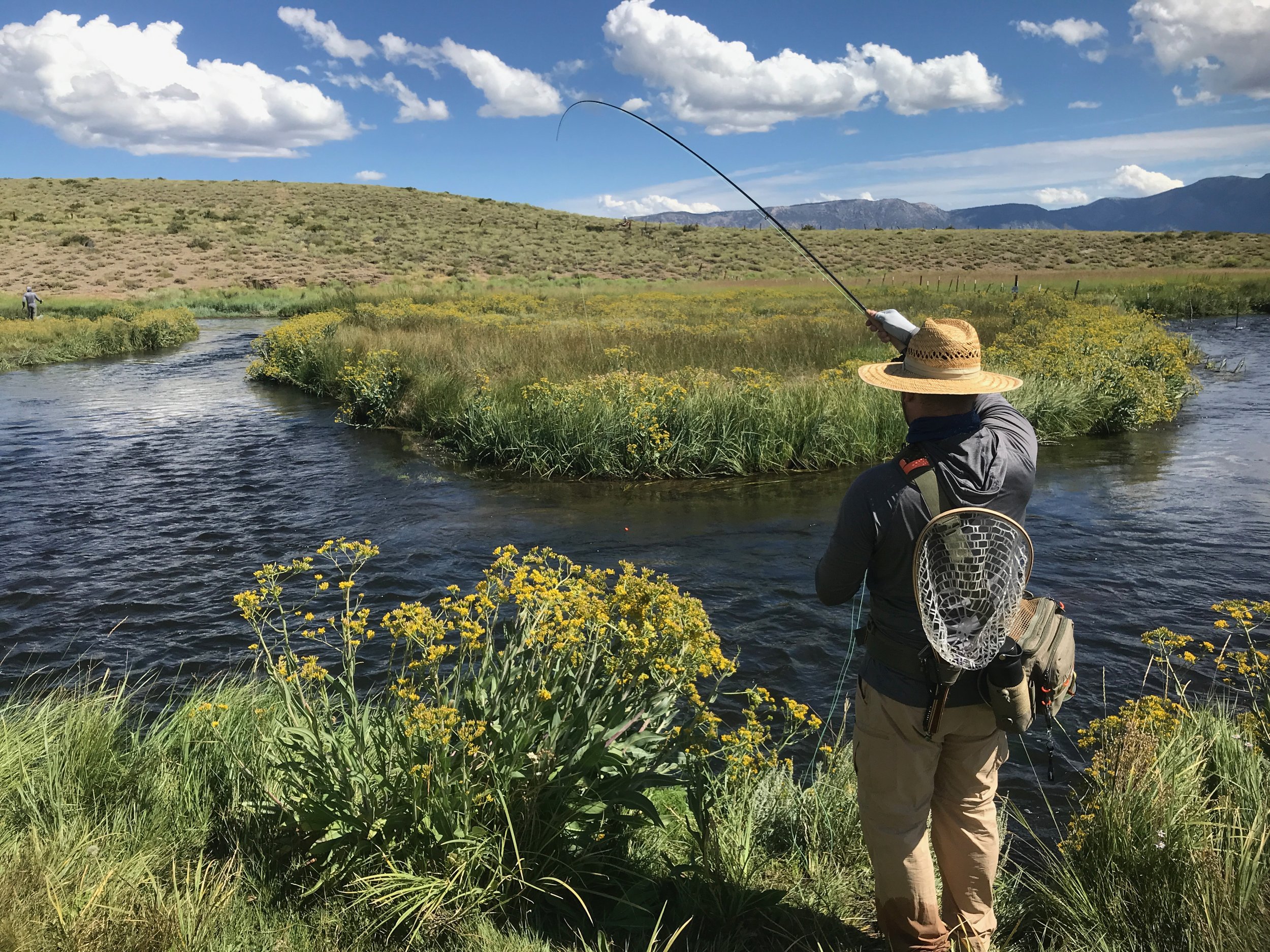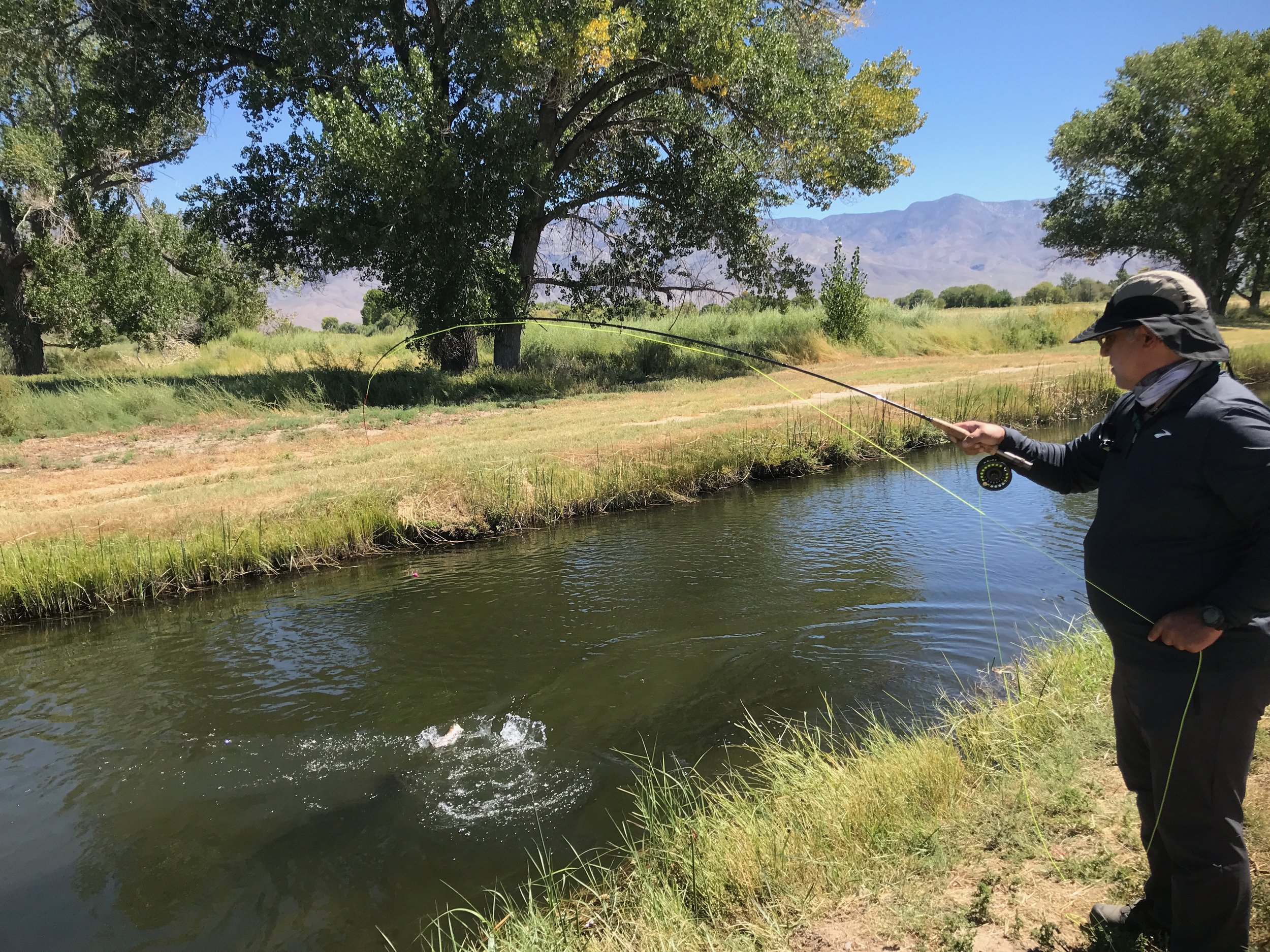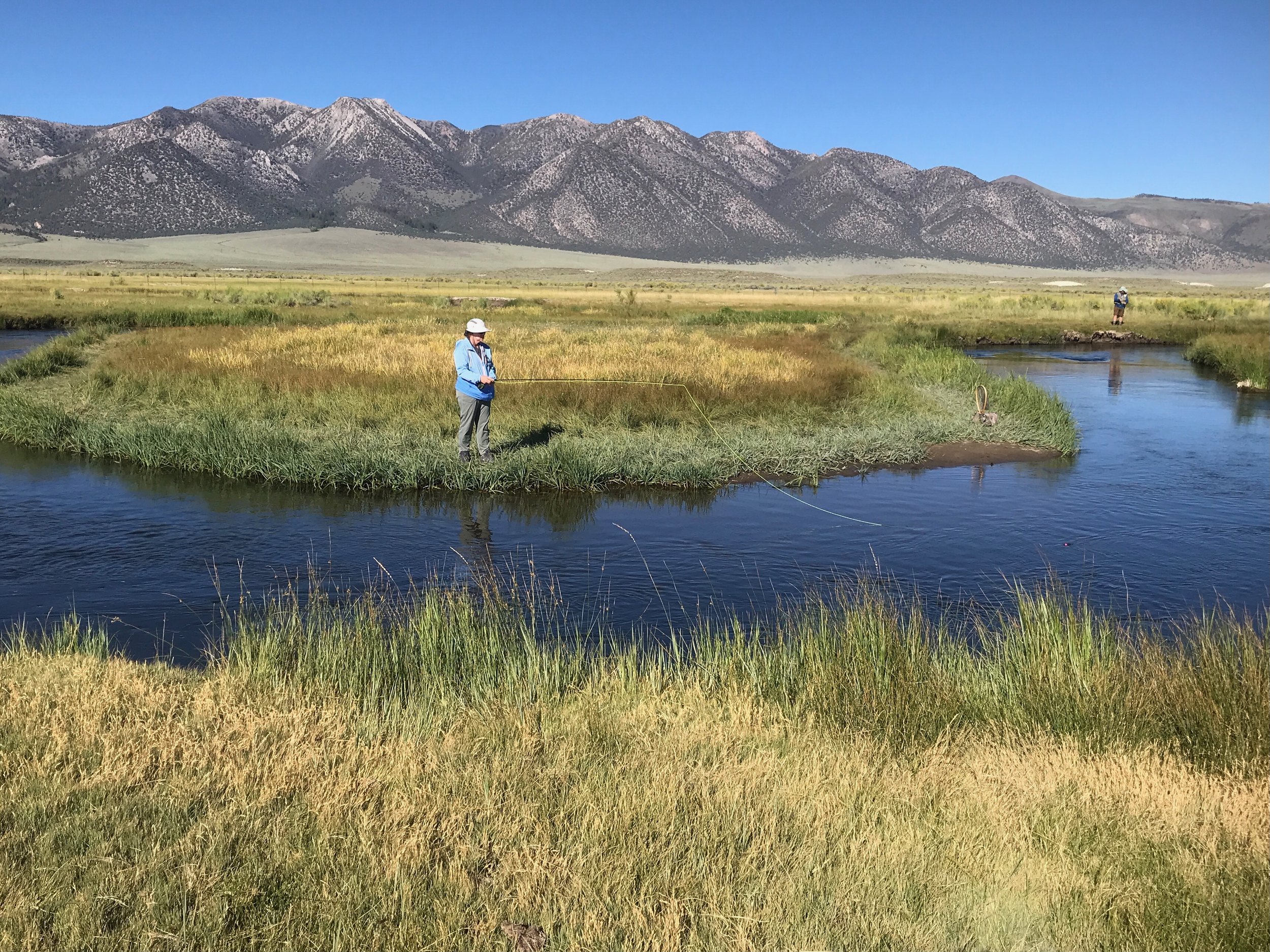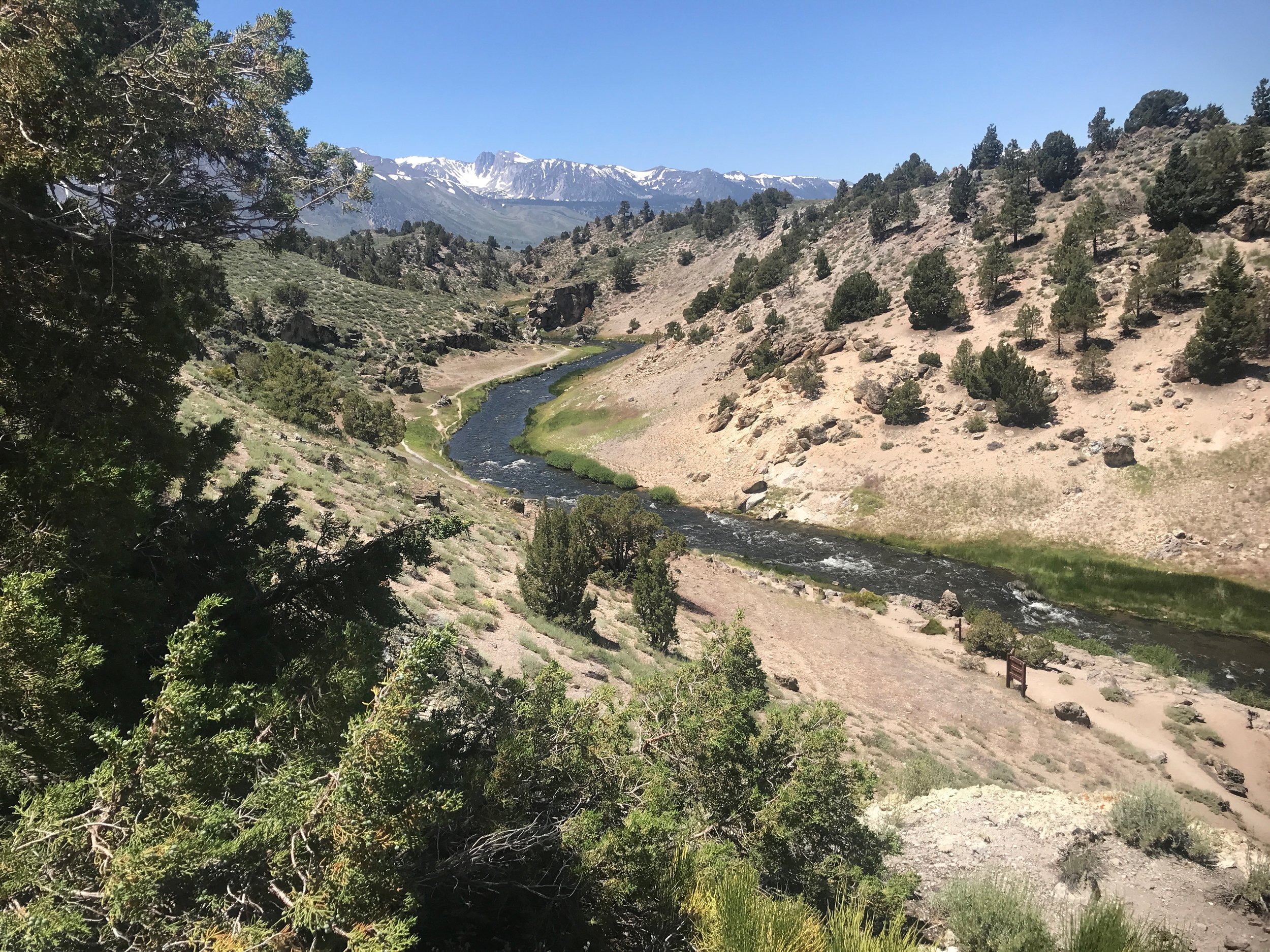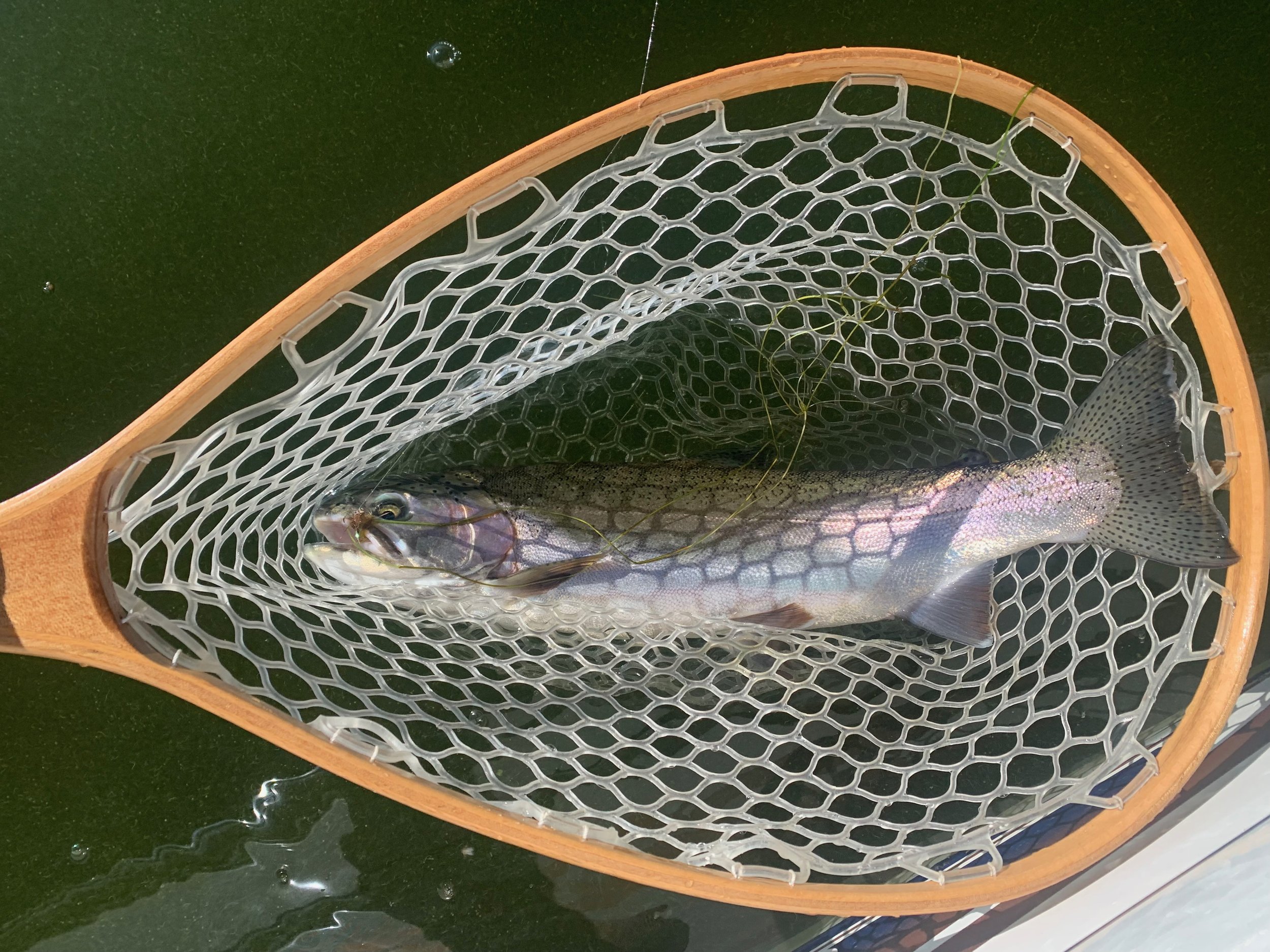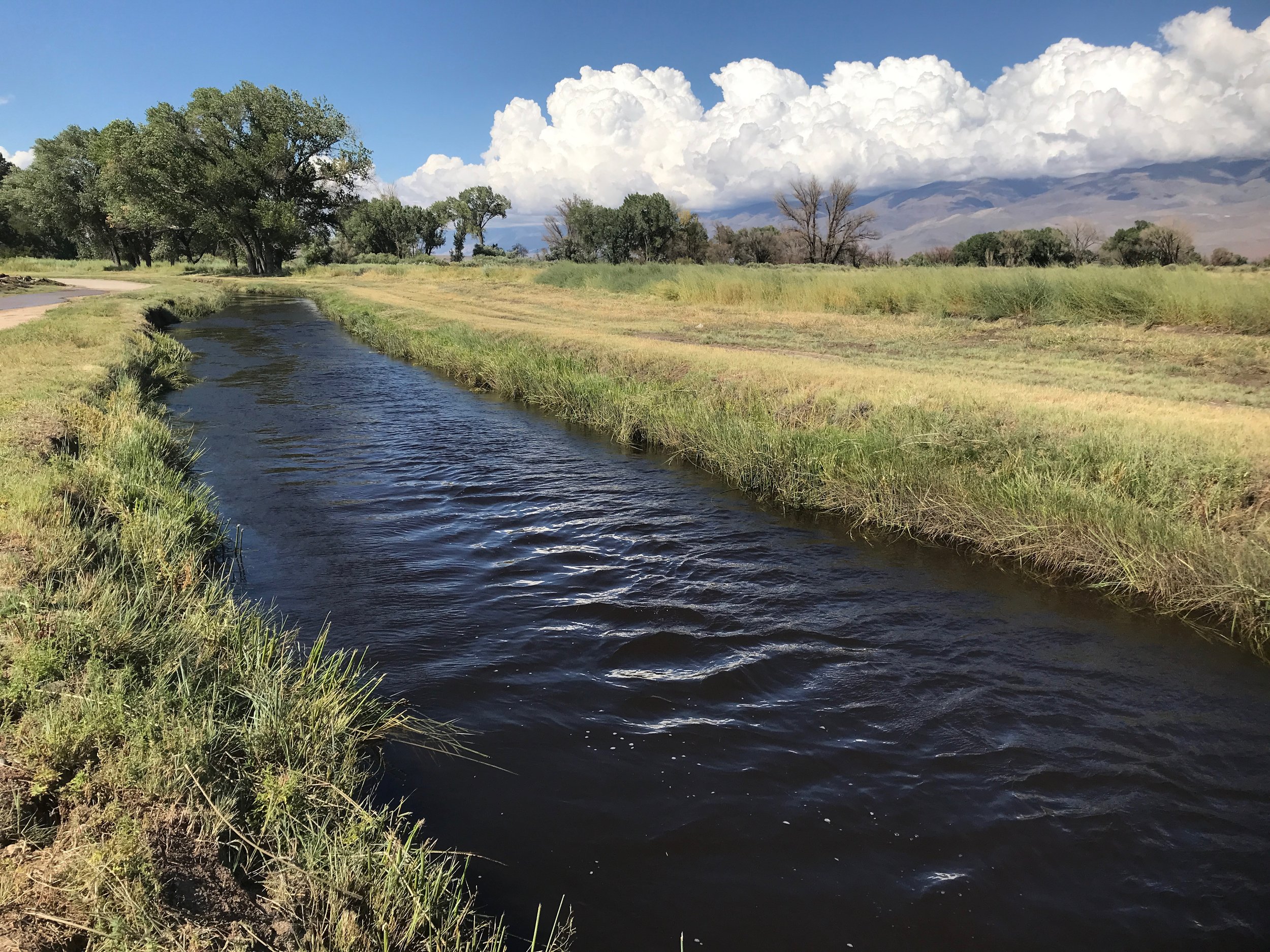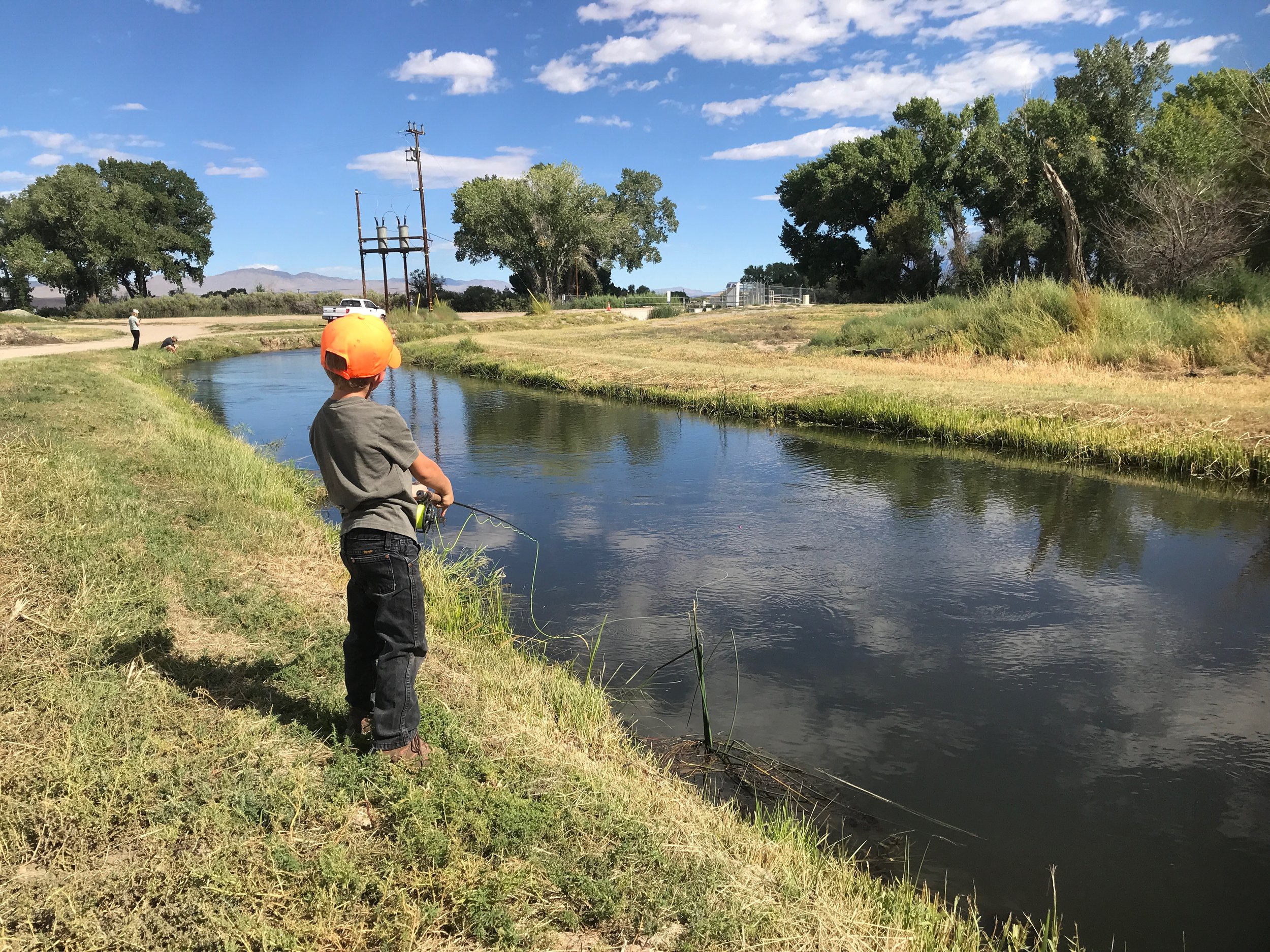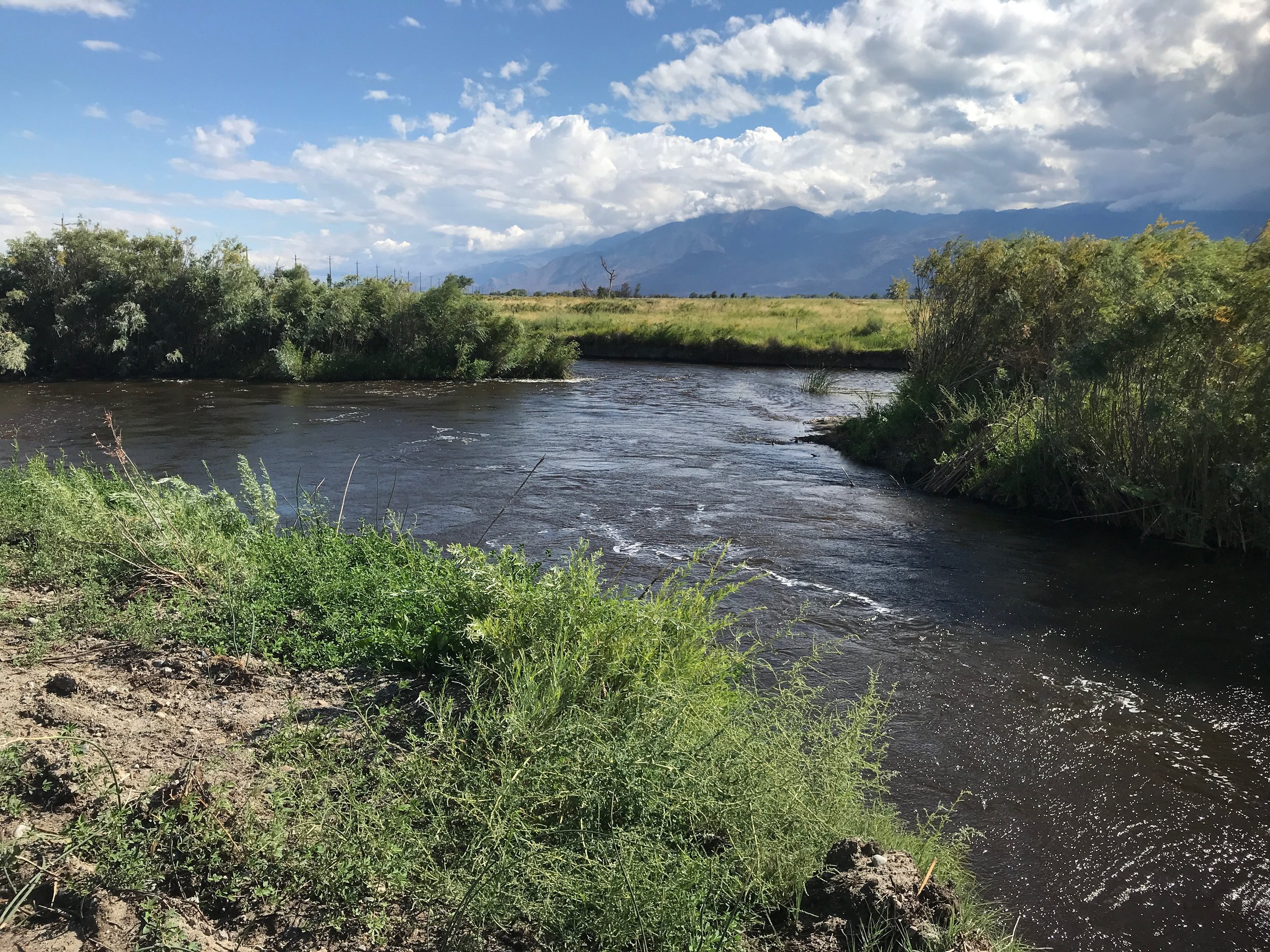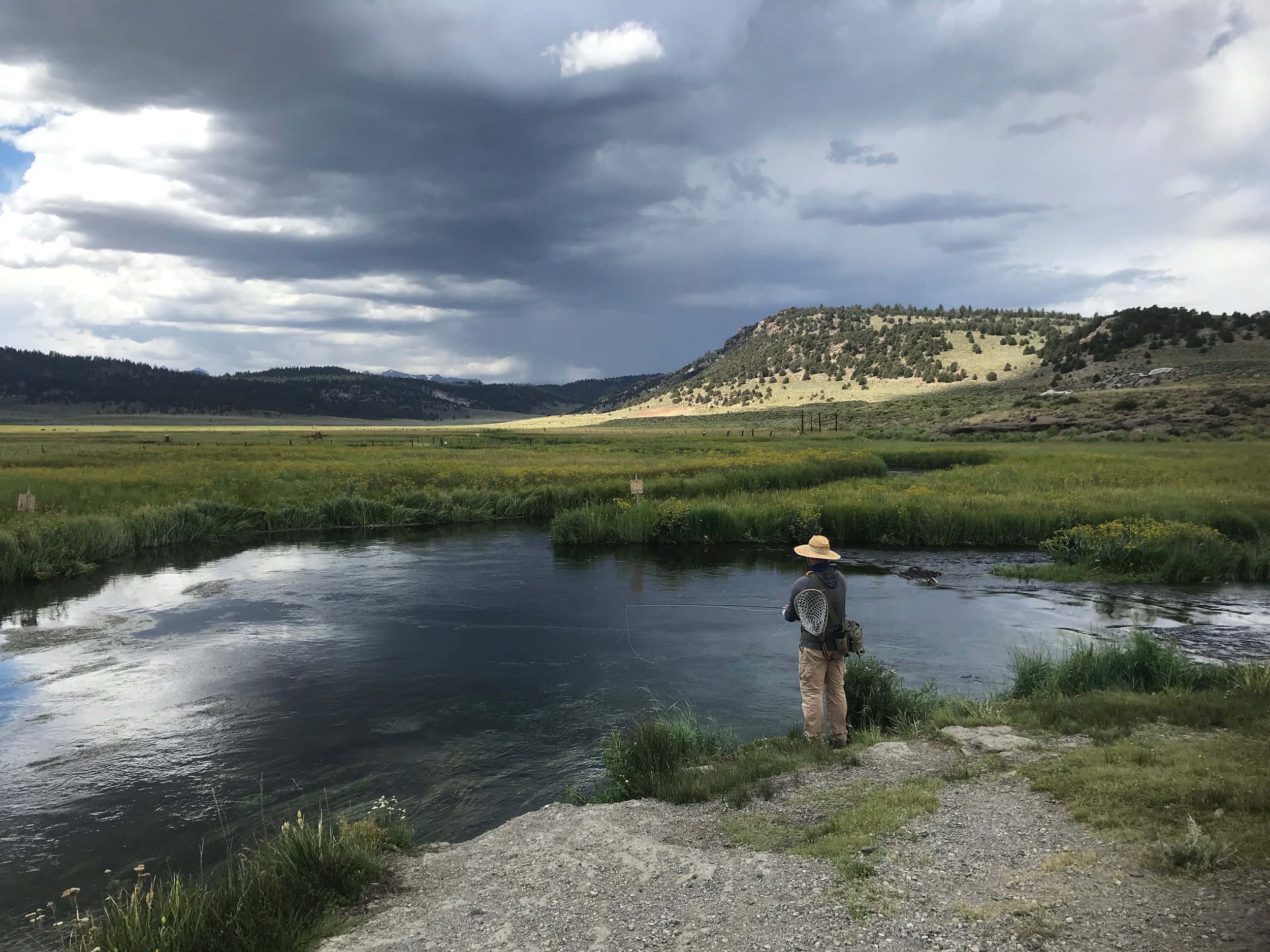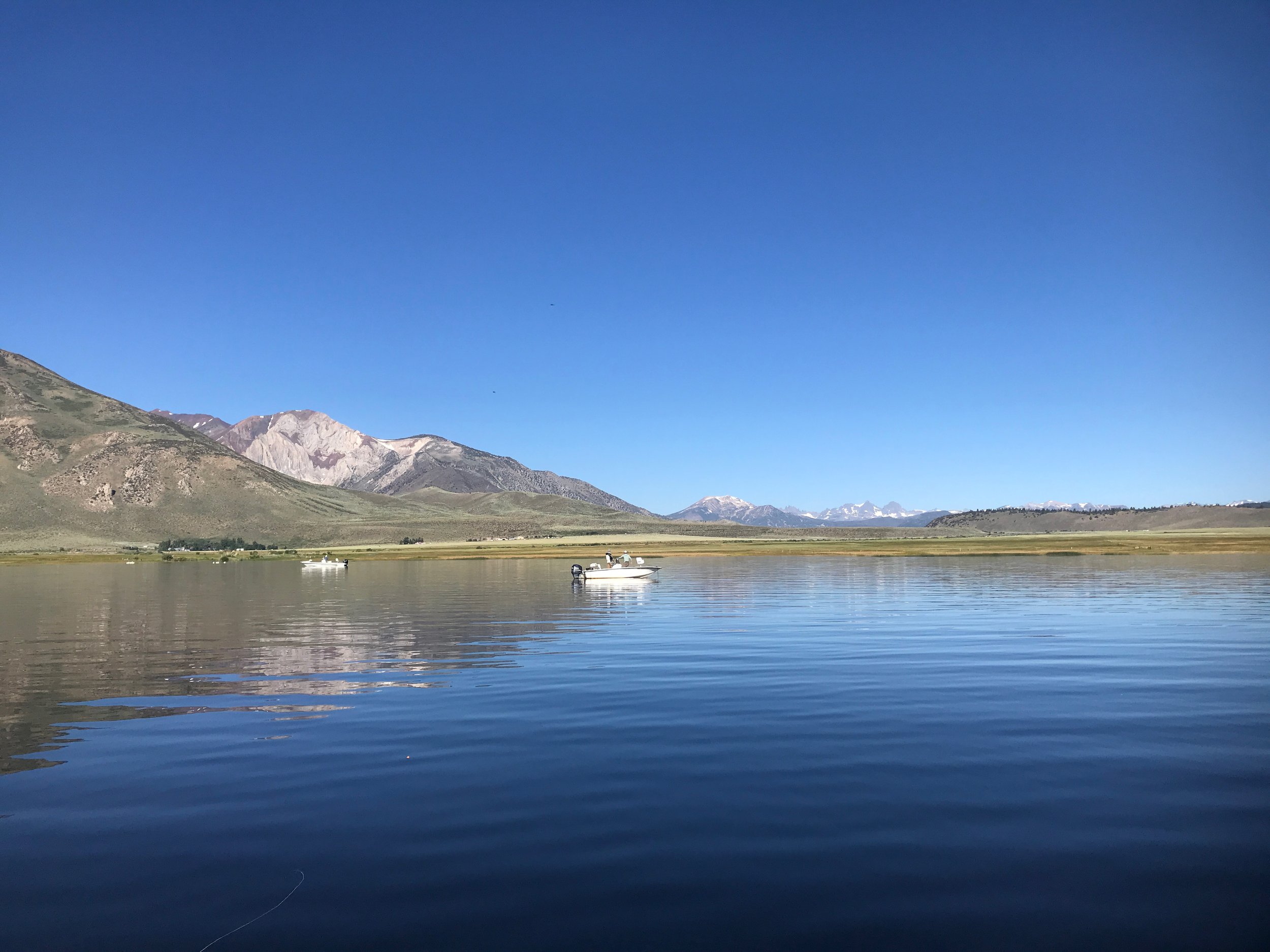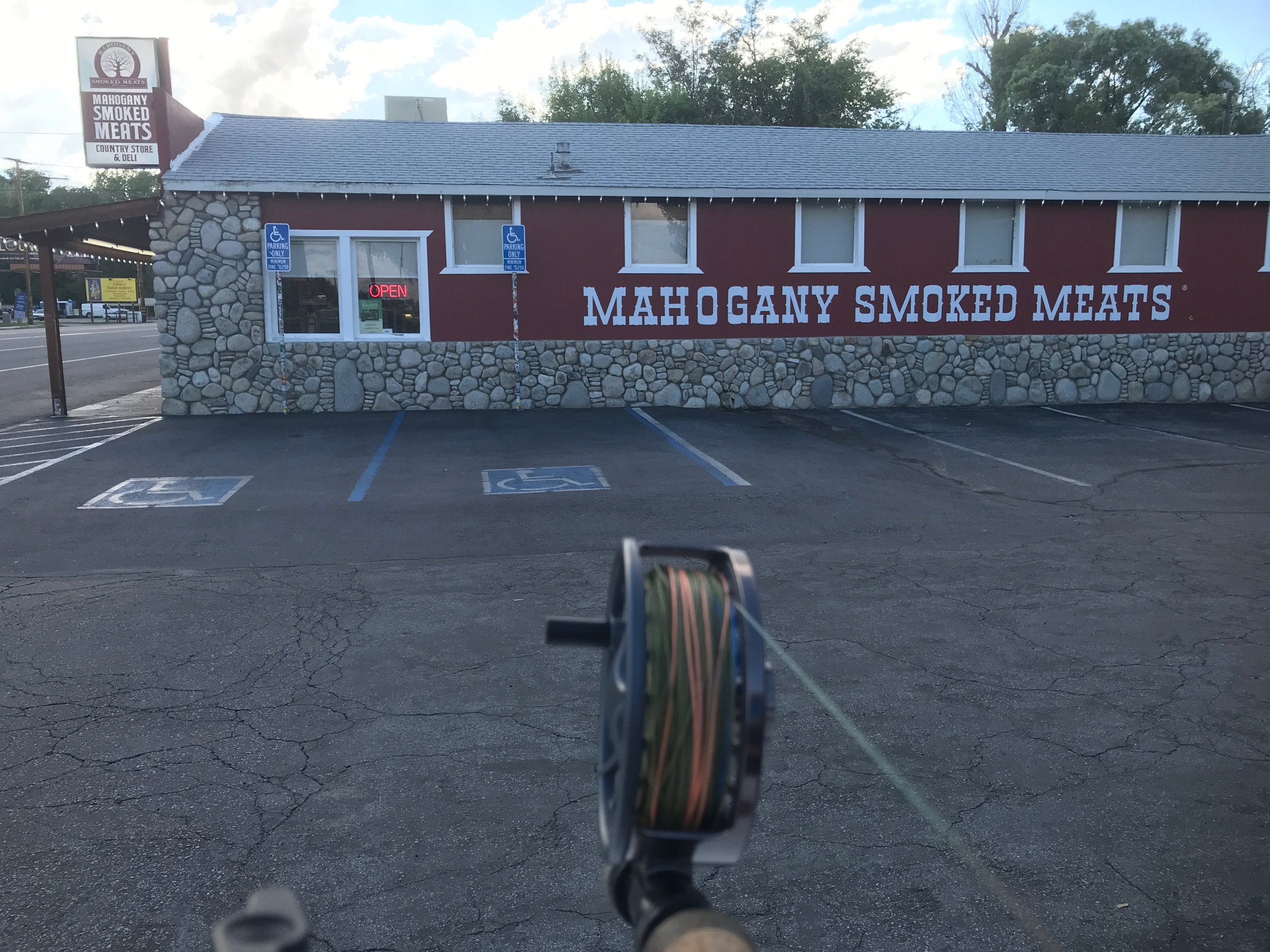It’s hard to believe that October is coming to an end. Fall colors are in full swing in the Owens Valley. Brown and brook trout are spawning. Fly fishers are catching trophy trout with nymphs and streamers. The general trout fishing season will be coming to an end on Wednesday November 15, 2023. Fish are actively feeding on the nymphs and adults of midges, caddis and mayflies.
Now is a perfect time to learn how to fly fish with fall colors as a backdrop in the Owens Valley.
San Joaquin River
Reds Meadow – Agnew Meadows:
If this area gets snow from this upcoming storm it’s perceivable that the access road will close for the year. If the road stays open fly fishers will have a great opportunity to fly fish for wild trout that are feeding opportunistically. Fly fishing with your favorite dry means you will be fly fishing with more confidence. Royal Wulff’s, stimulators, elk hair caddis and Adams parachutes are a few of the patterns that always produce on the San Joaquin River.
An abundance of six to 10 inch wild brown trout taking dry flies off the surface is one of the reasons to fly fish the San Joaquin River.
Lower Owens River
Wild Trout Section:
Flows are down to 225 CFS which is perfect for wading and fly fishing in the wild trout section of the lower Owens River. There is a mid-day hatch of mayflies that have the trout actively feeding. Nymphing is the preferred method of fly fishing the river as few trout are coming to the surface to feed on the hatching mayflies. Euro nymphing and nymphing under an indicator with hot spot pheasant tail nymphs, olive quilldigons, brown quilldigons, stoner nymphs, bead head flash back pheasant tail nymphs and split case PMD nymphs are fooling the wild brown and rainbow trout.
Flows are allowing fly fishers to wade the lower Owens River before flow increase to 500 CFS and fly fishers will have to fish off the bank.
Hot Creek
Interpretive Site:
Hatches of blue wing olives, tricos and caddis have the trout actively feeding. The bigger trout are taking the nymphs on the bottom of the deeper holes. There is a good number of six to 12 inch trout feeding on surface and can be fooled with trico spinners, trico parachutes in male and female versions and gray caddis patterns. Fishing with big articulated streamers are producing a few trophy trout for the patient angler willing to cover a lot of water for a few big grabs.
Hooking up with dry flies on Hot Creek this late in the season is an unexpected bonus.
Hot Creek
Canyon Section:
This section of Hot Creek is finally fishing well. Nymphing with bead head flash back pheasant tail nymphs in size 18, tiger and zebra midges in size 18 or 20, gray caddis pupae in size 20, size 18 olive quilldigons, size 16 hot spot pheasant tail nymphs, Frenchie’s, and size 12 stoner nymphs is fooling wild brown trout and rainbow trout to 18 inches. The dry fly hatch has been sporadic in the canyon. If you observe good numbers of trout taking the hatching mayflies or caddis definitely switch to a dry fly.
Deep holes is where the trophy trout rest and feed on their migration upstream.
Upper Owens River
Above Benton Crossing Bridge:
The trophy trout have moved into this section of the river. Fly fishers fishing in the deep pools, deep runs and cutbanks with large nymphs or streamers are hooking up with trophy brown trout and rainbow trout. Successful fly fishers are covering lots of water to find the pods of trophy trout that are resting and feeding. Actively spawning trout should not be targeted by fly fishers as this is our future trout populations for the upper Owens River and Crowley Lake. Key to successful fly patterns is to offer the trout a fly pattern that looks like a lot of calories like size 12 stoner nymphs, bead head flash back gold ribbed hare’s ears and green/gold Prince nymphs. While most fly fishers are targeting the trophy trout there are a good number of six to 12 inch wild trout willing to take dries and nymphs of mayflies and caddis.
Upper Owens River
Below Benton Crossing Bridge:
Fly fishers have until November 15 to pursue the trophy trout migrating out of Crowley Lake on their way upstream to reproduce in the gravel sections of the river above Benton Crossing Bridge. Working nymphs and streamer on the substrate in the deep holes can produce the trophy trout of a fly fishers career. Trophy trout expend a lot of energy on their migration upstream. So to replenish the burned up calories the trophy trout are looking for a big meal like a size 12 bead head flash back gold ribbed hare’s ears, green/gold Prince nymphs, stoner nymphs and copper John’s in copper or red.
Whiskey Bay is a great spot to fly fish from the bank after South Landing closes for the season on Sunday October 29, 2023.
Crowley Lake:
Crowley Lake closes this Sunday October 29, 2023. Well actually the marina is closing and Crowley Lake will stay open to fishing tell Wednesday November 15. Most of the fly fishers have been targeting the north arm of the lake in the vicinity of where the upper Owens River flows into the lake. Fishing with perch young of the year patterns like balanced perch, olive matukas, and olive wooly buggers is producing fish for fly fishers stripping these patterns.
Nymphing in Bishop Creek Canal continues to produces for fly fishers nymphing under an indicator.
Bishop Creek Canal:
Behind the Old Ford Dealer:
Mid-day temperatures are perfect for fly fishing on the canal. Nymphing continues to be the most productive method of fly fishing the canal. Key to success is to thoroughly cover the water and then slowly move upstream until covering all the water you can fish in a session. Size 18 bead head flash back pheasant tail nymphs, size 12 green/gold Prince nymphs, size 16 hot spot pheasant tail nymphs and size 12 stoner nymphs are the productive patterns.


